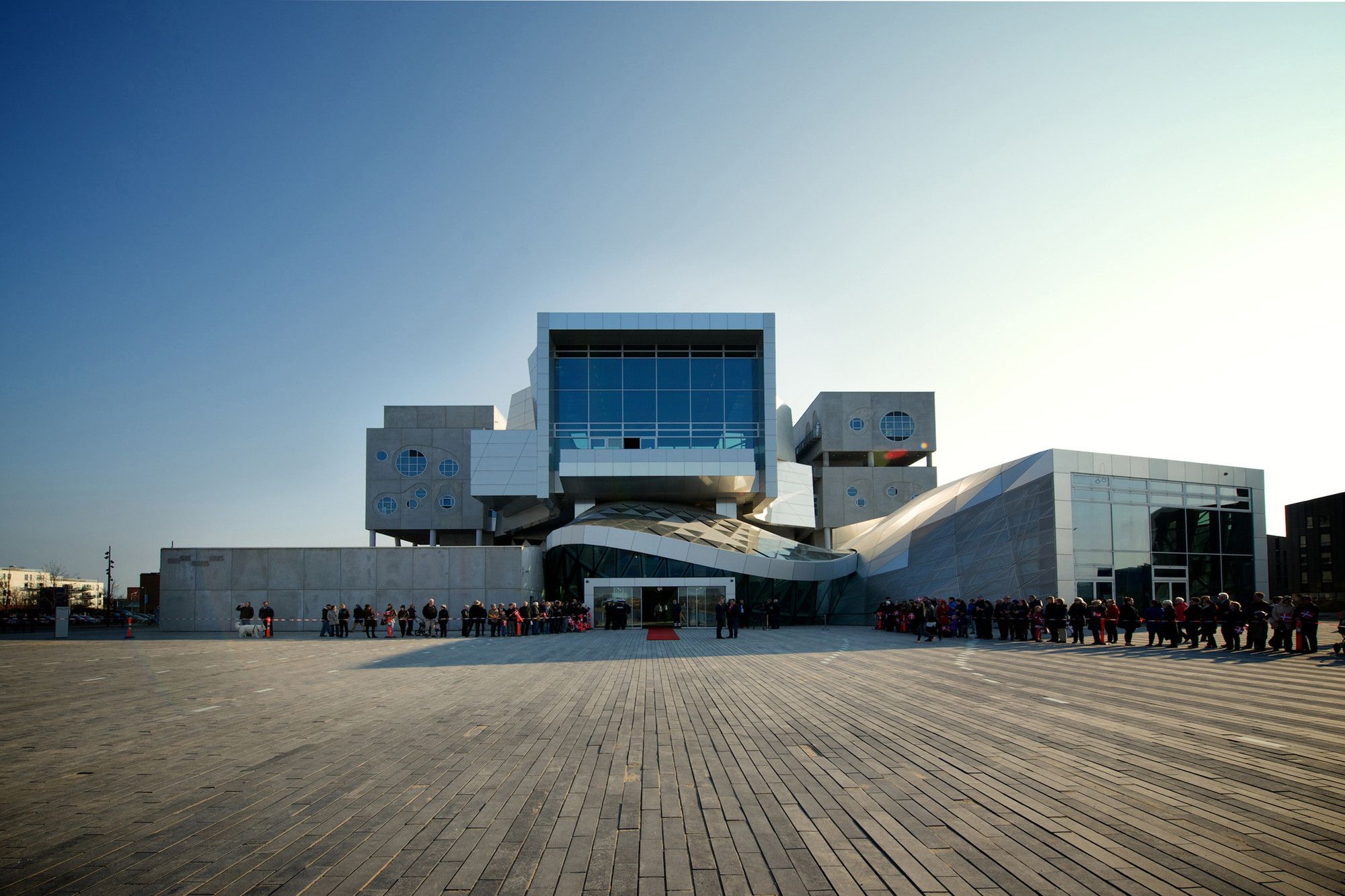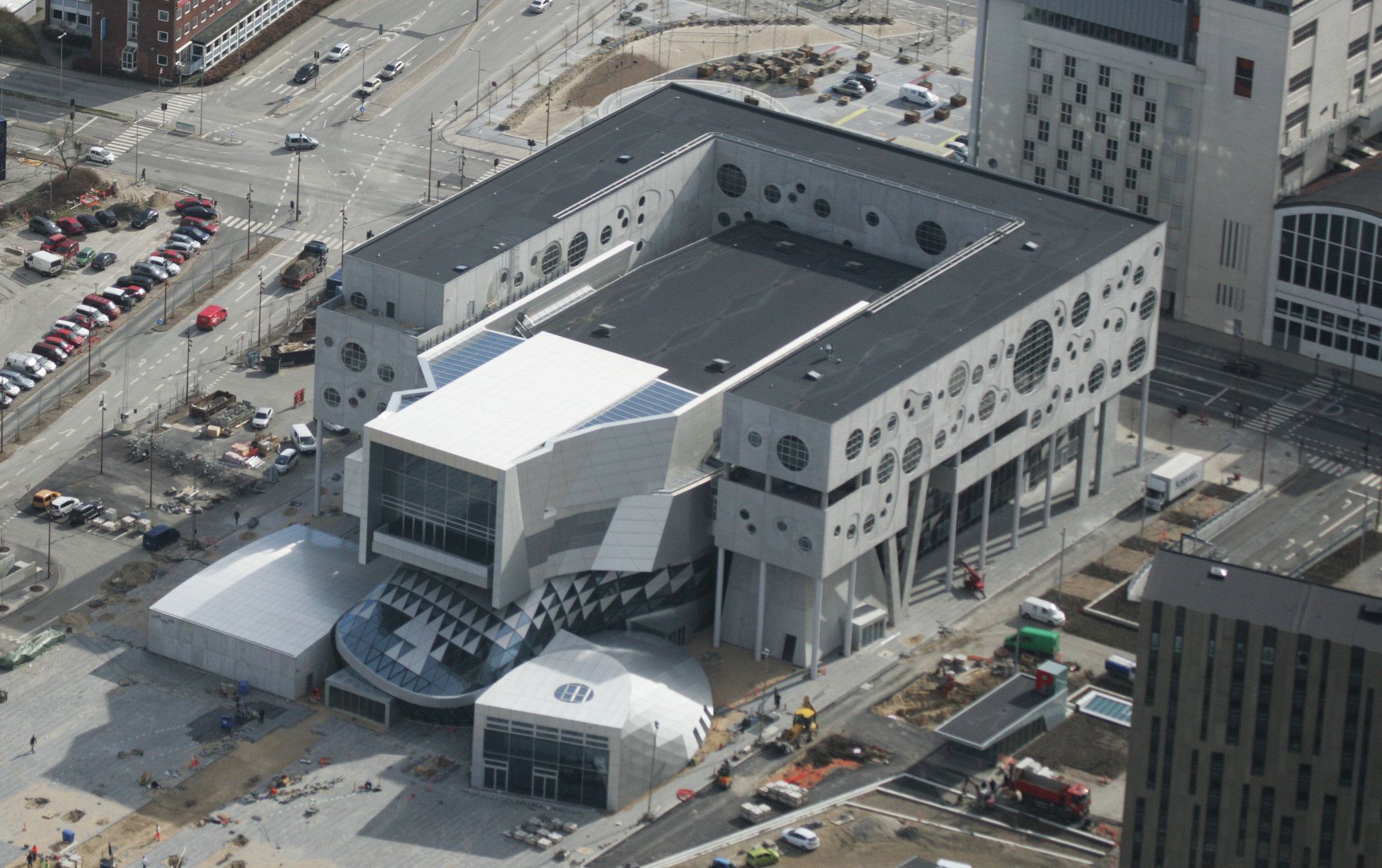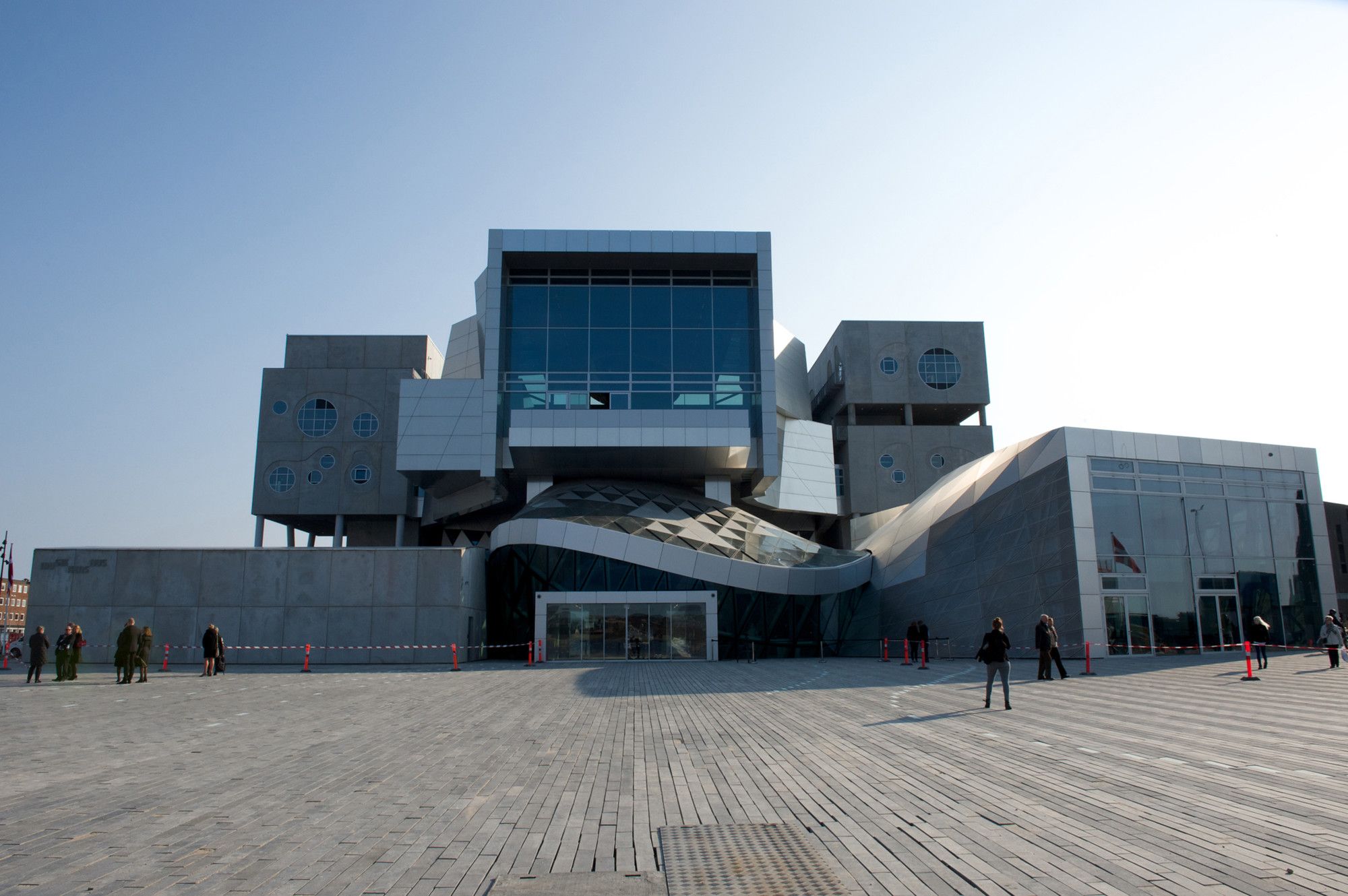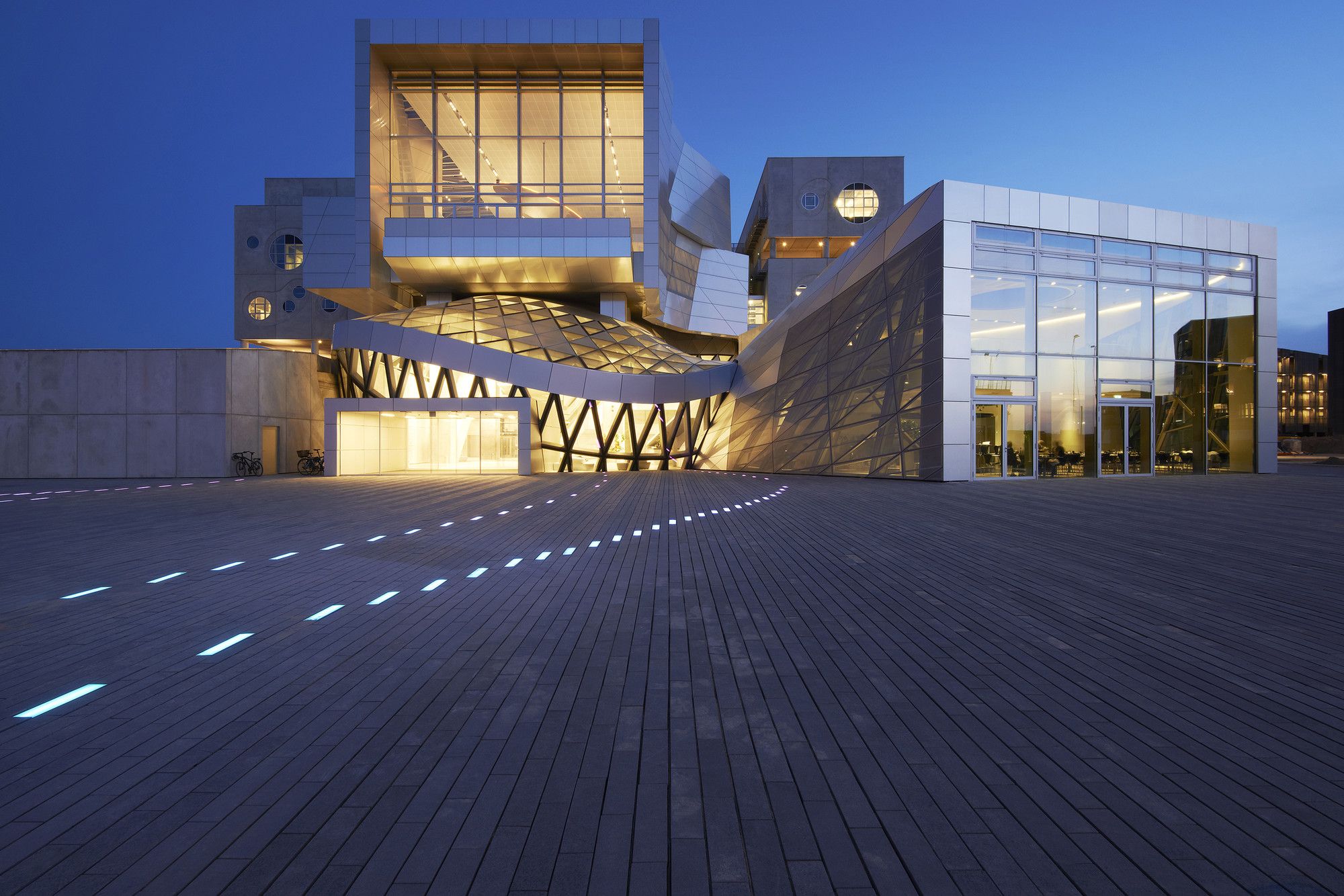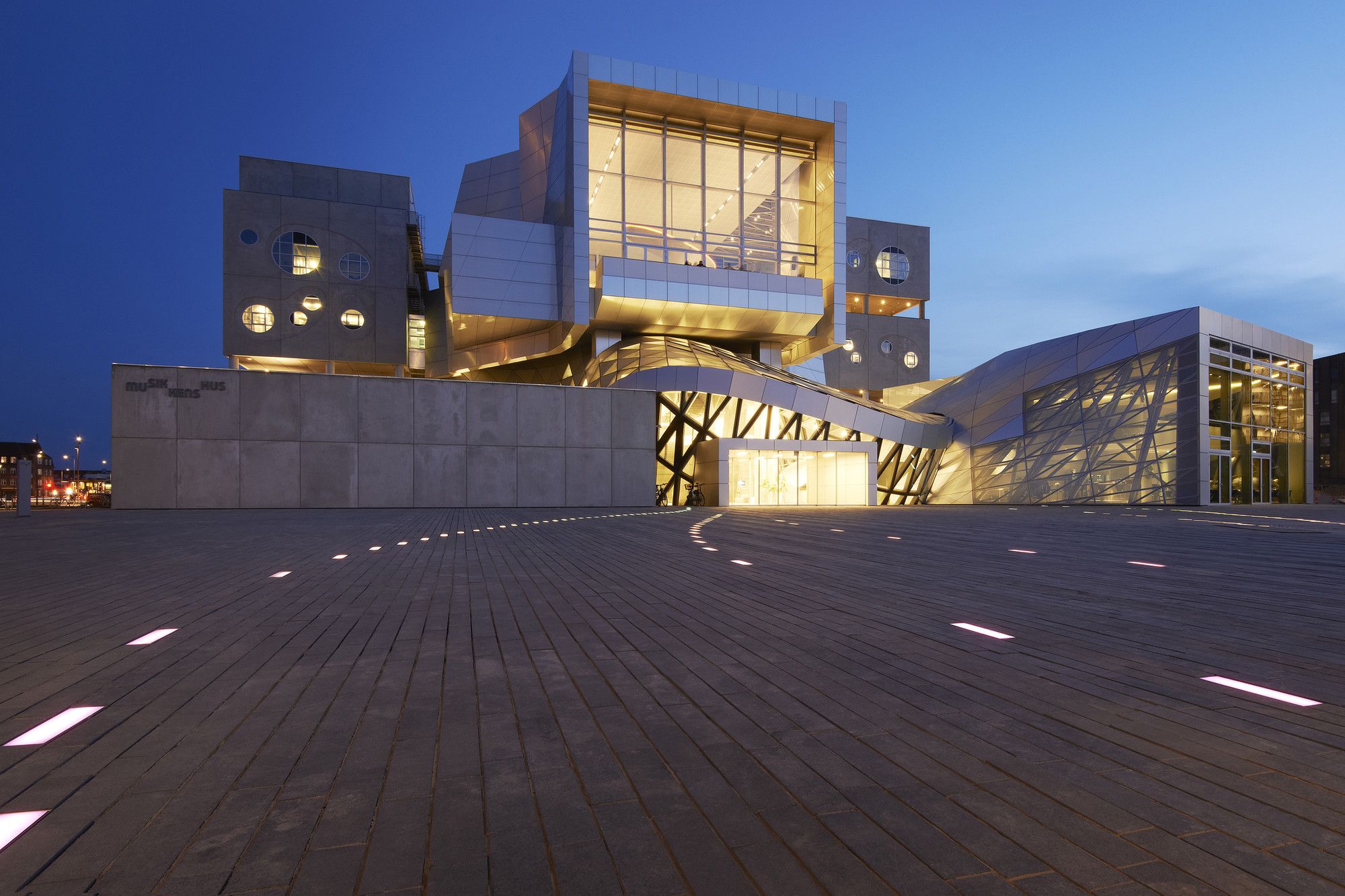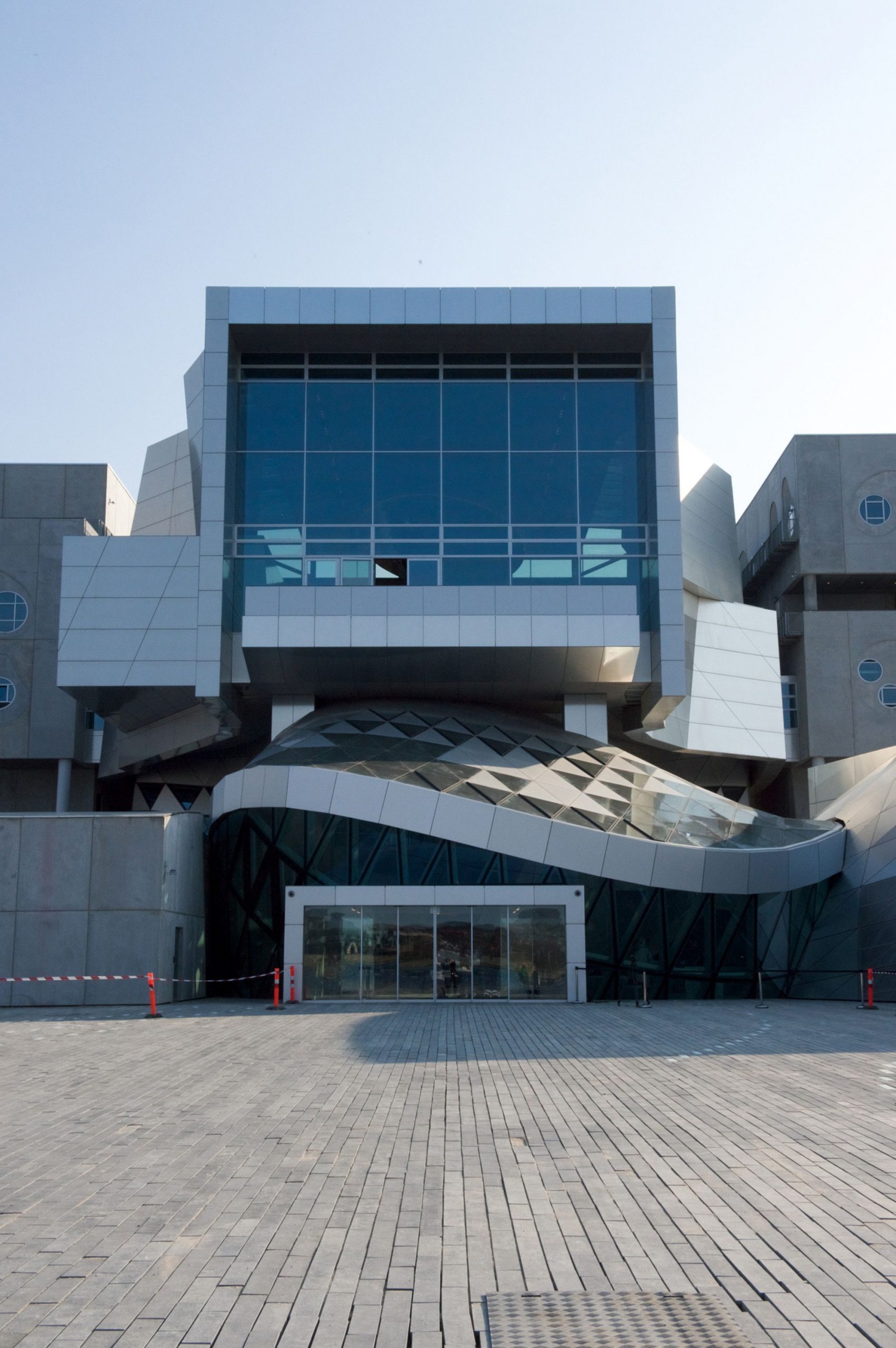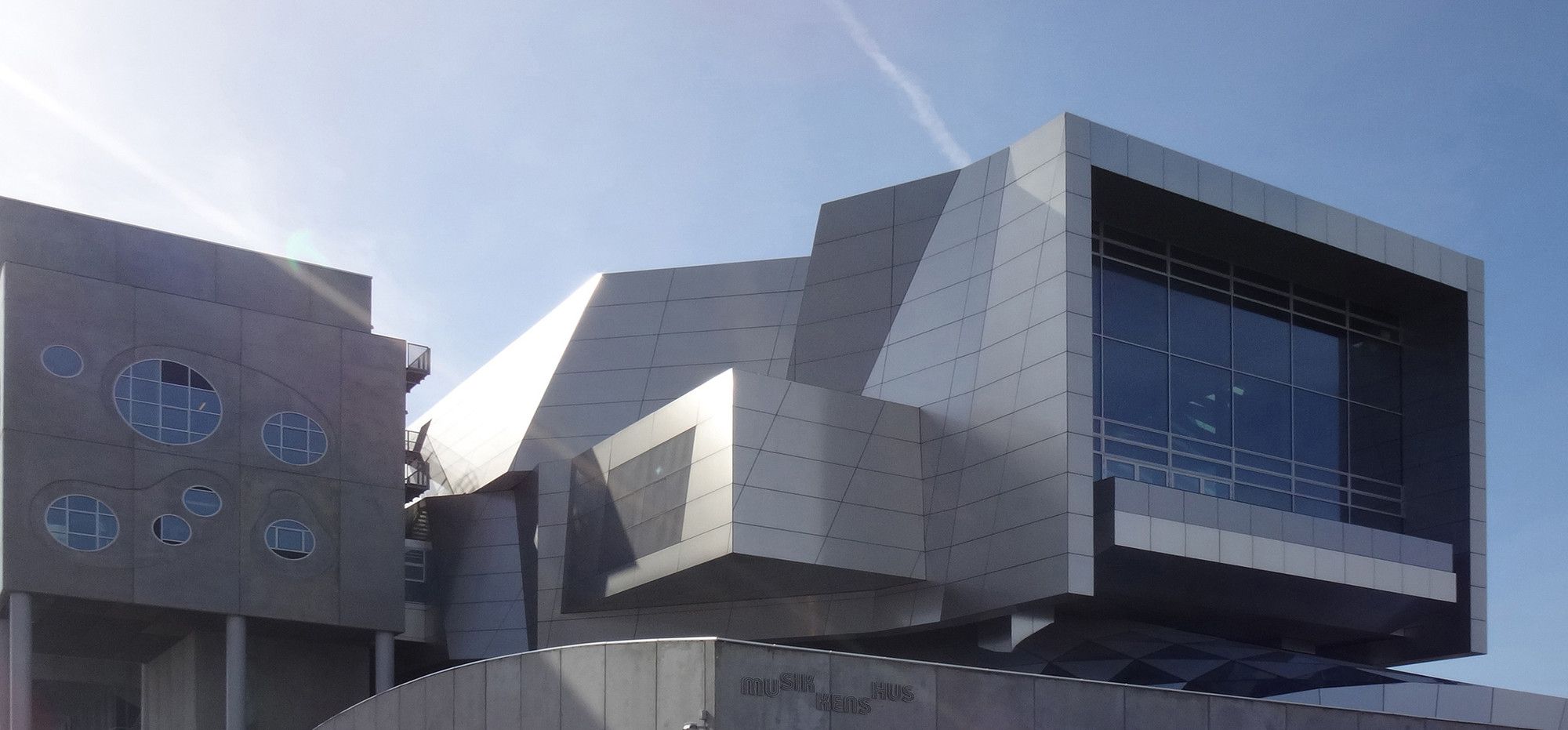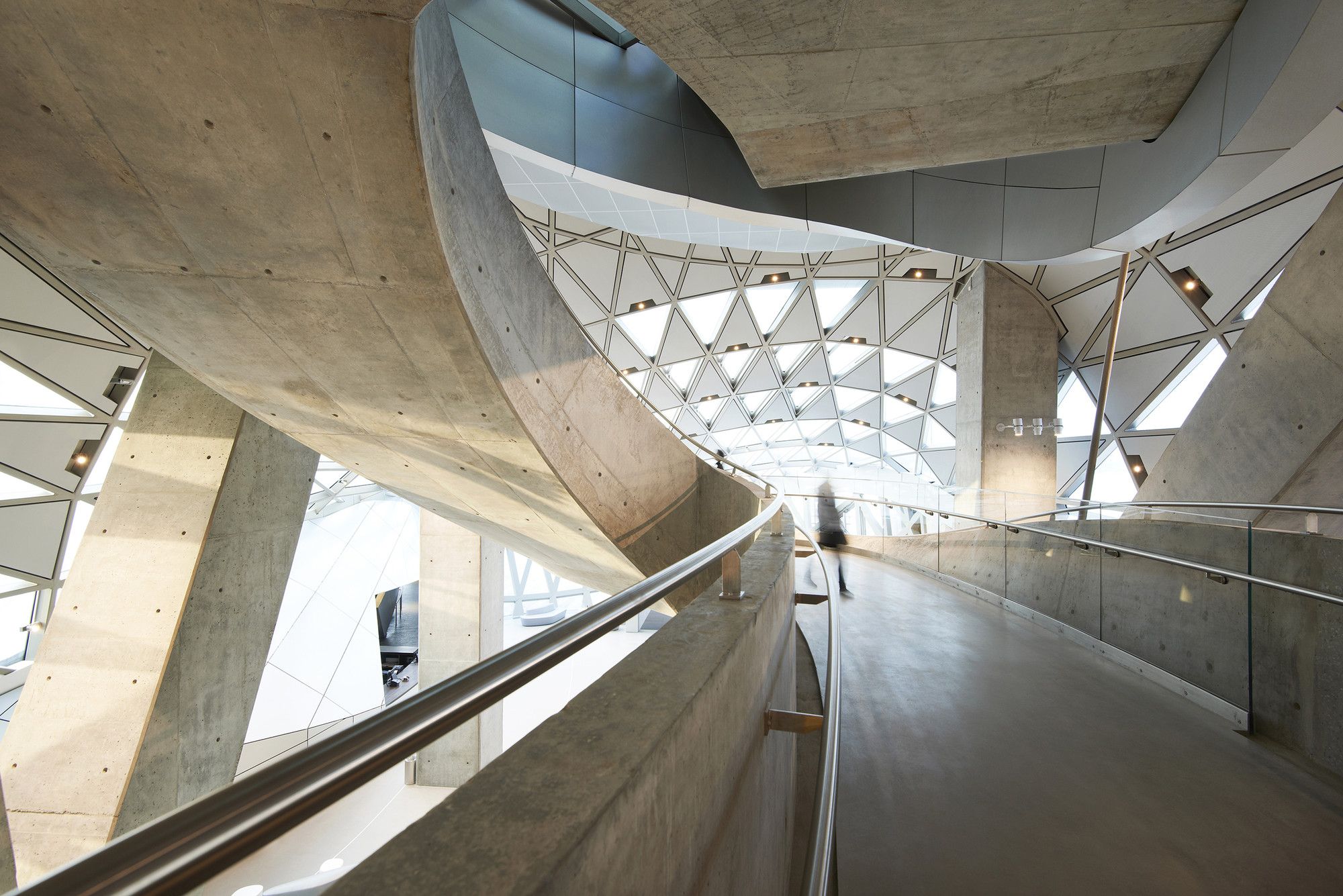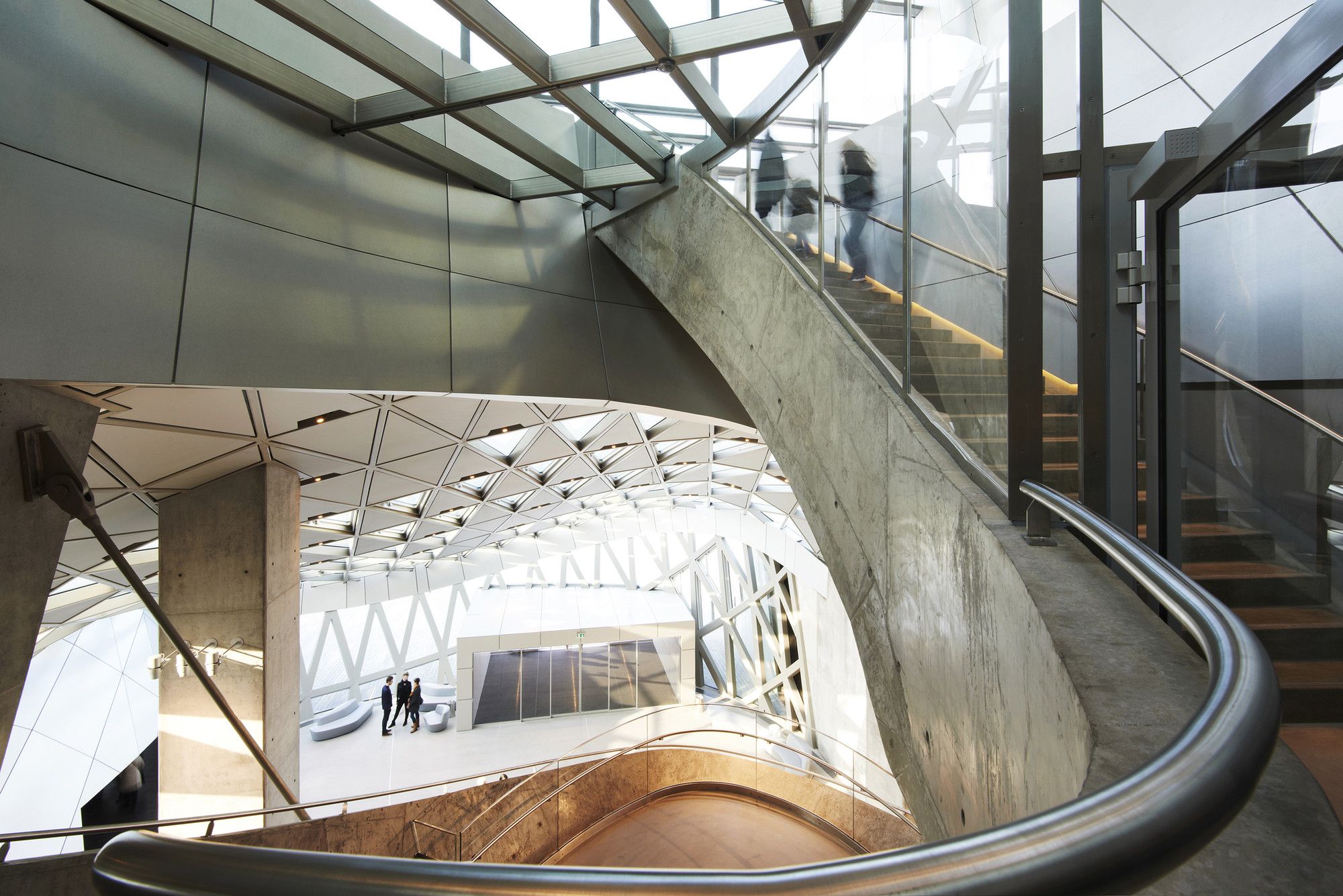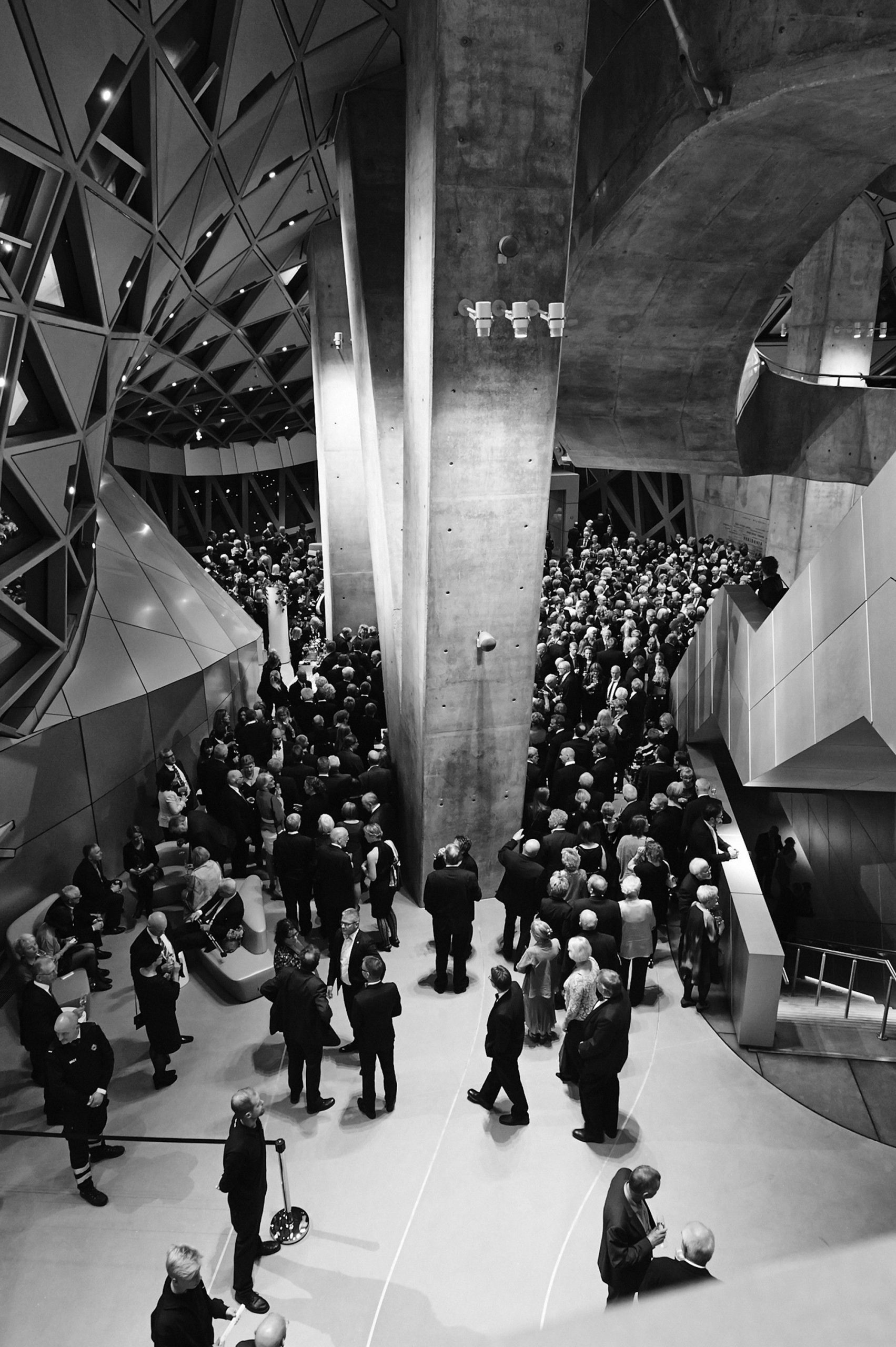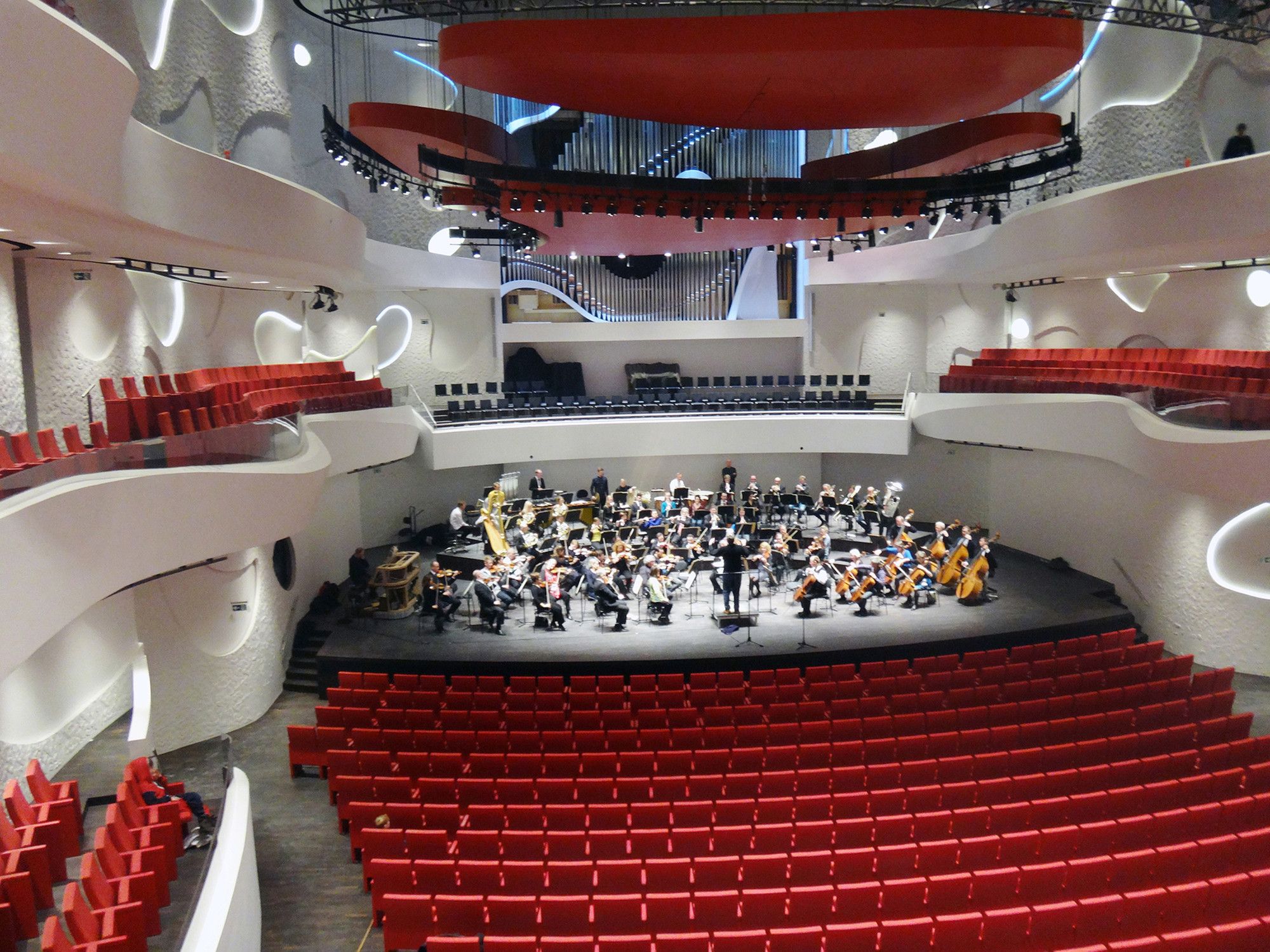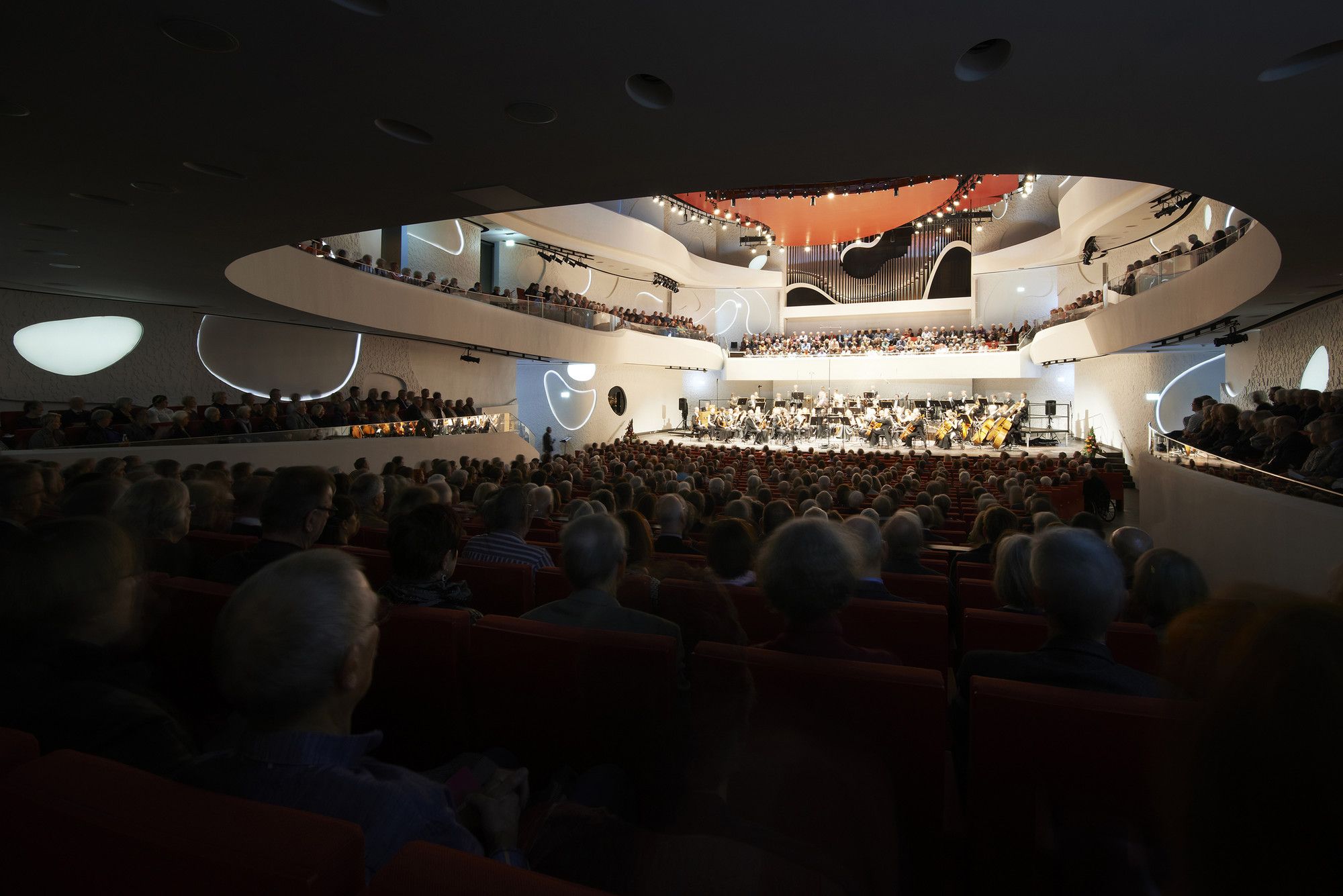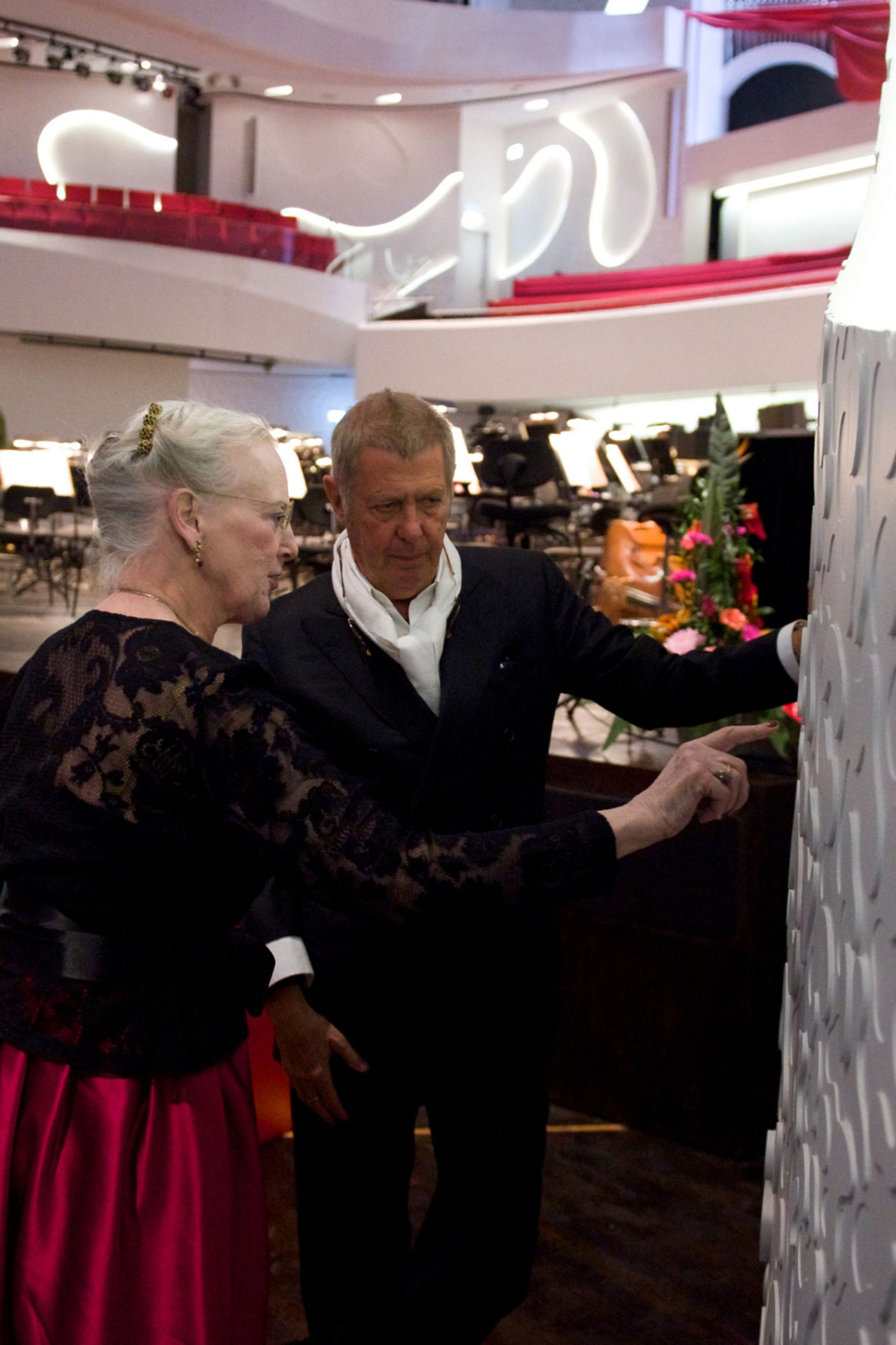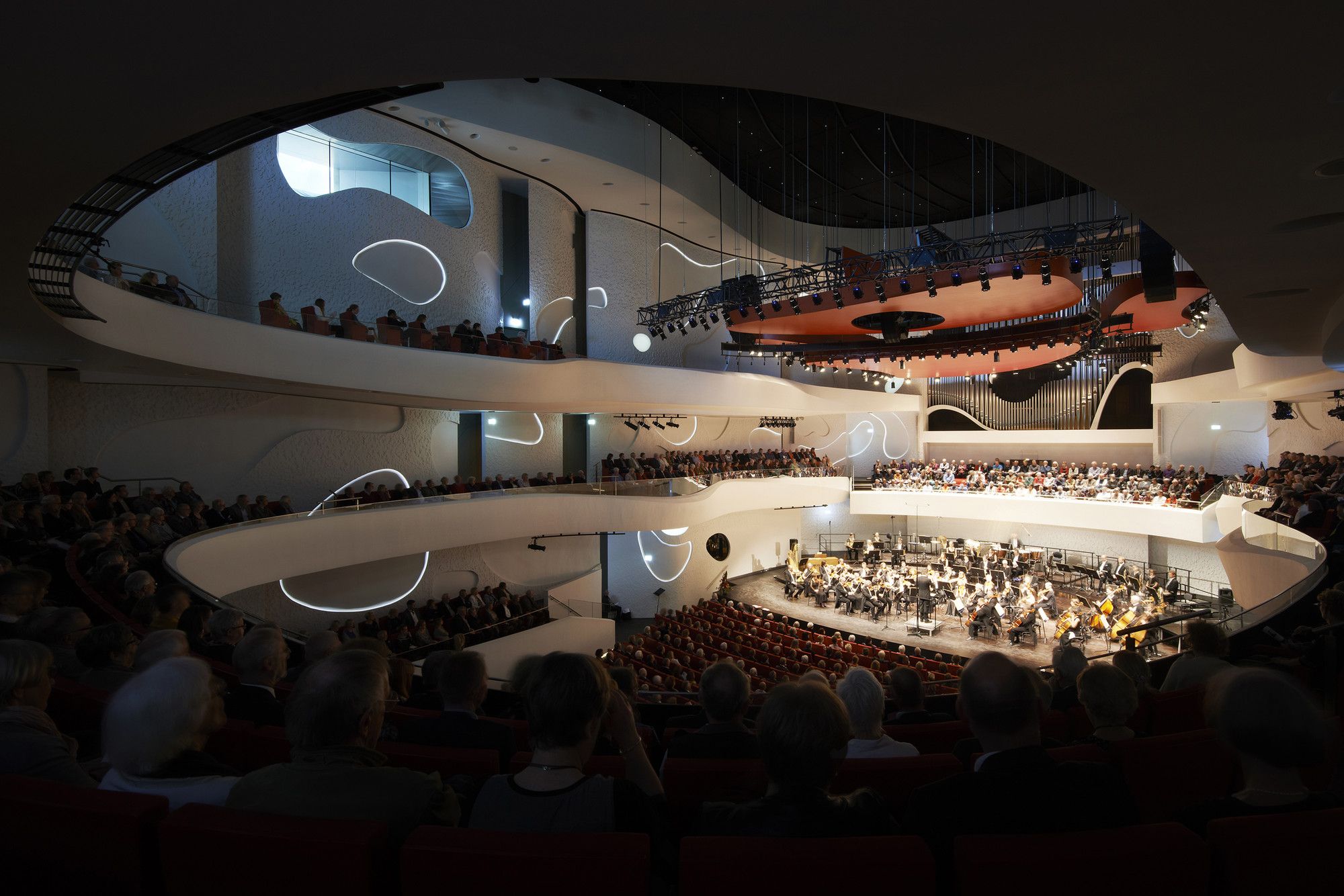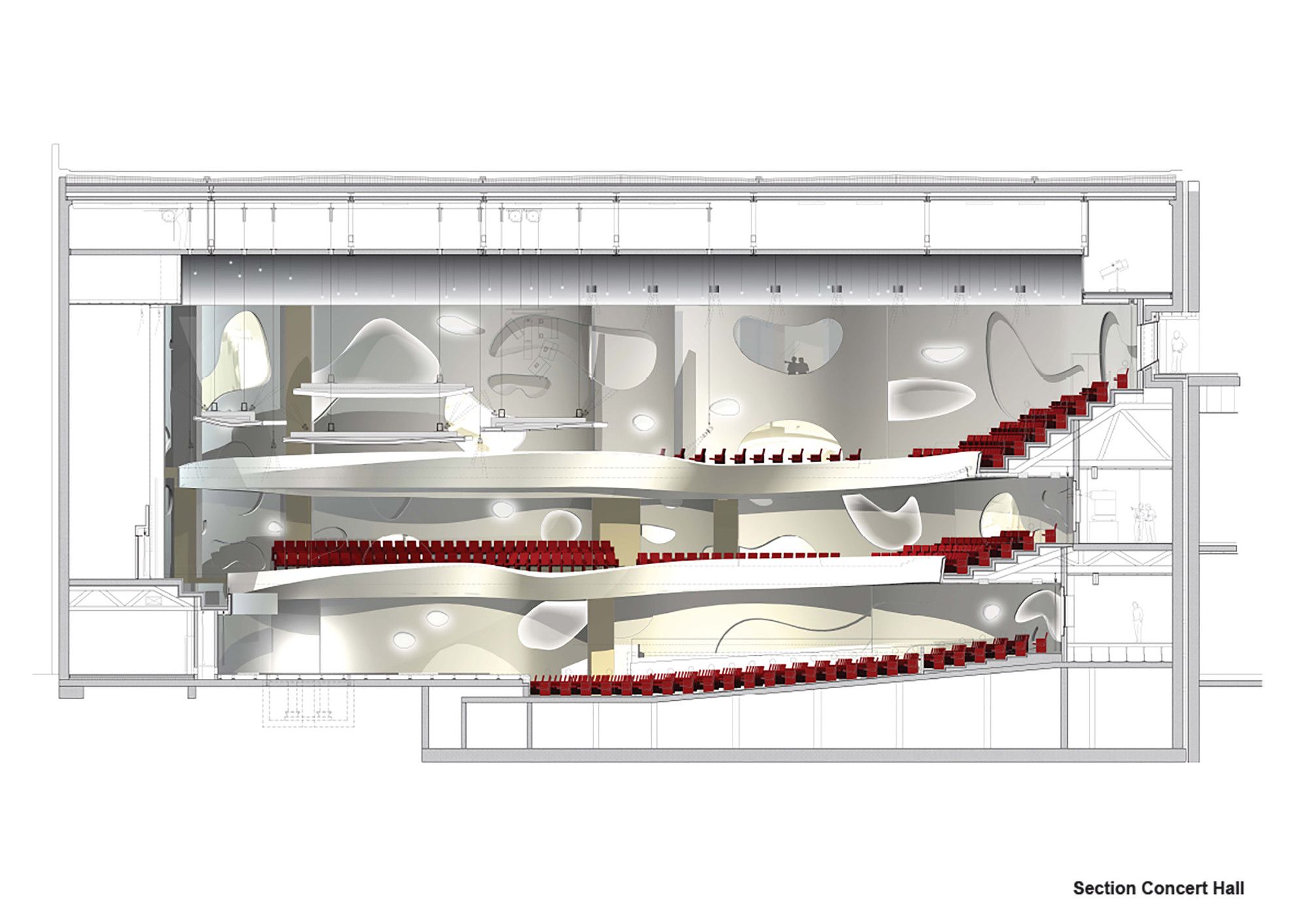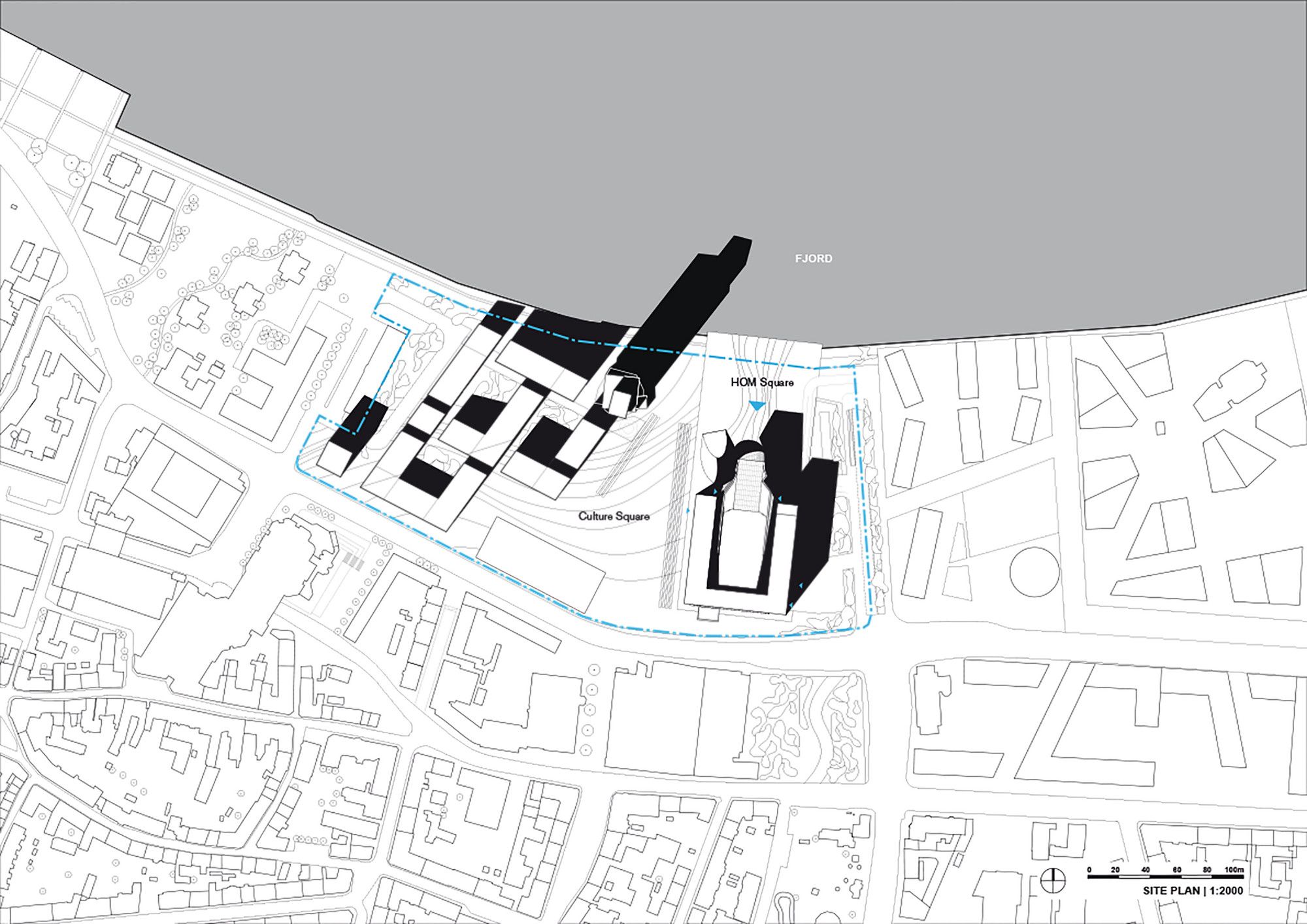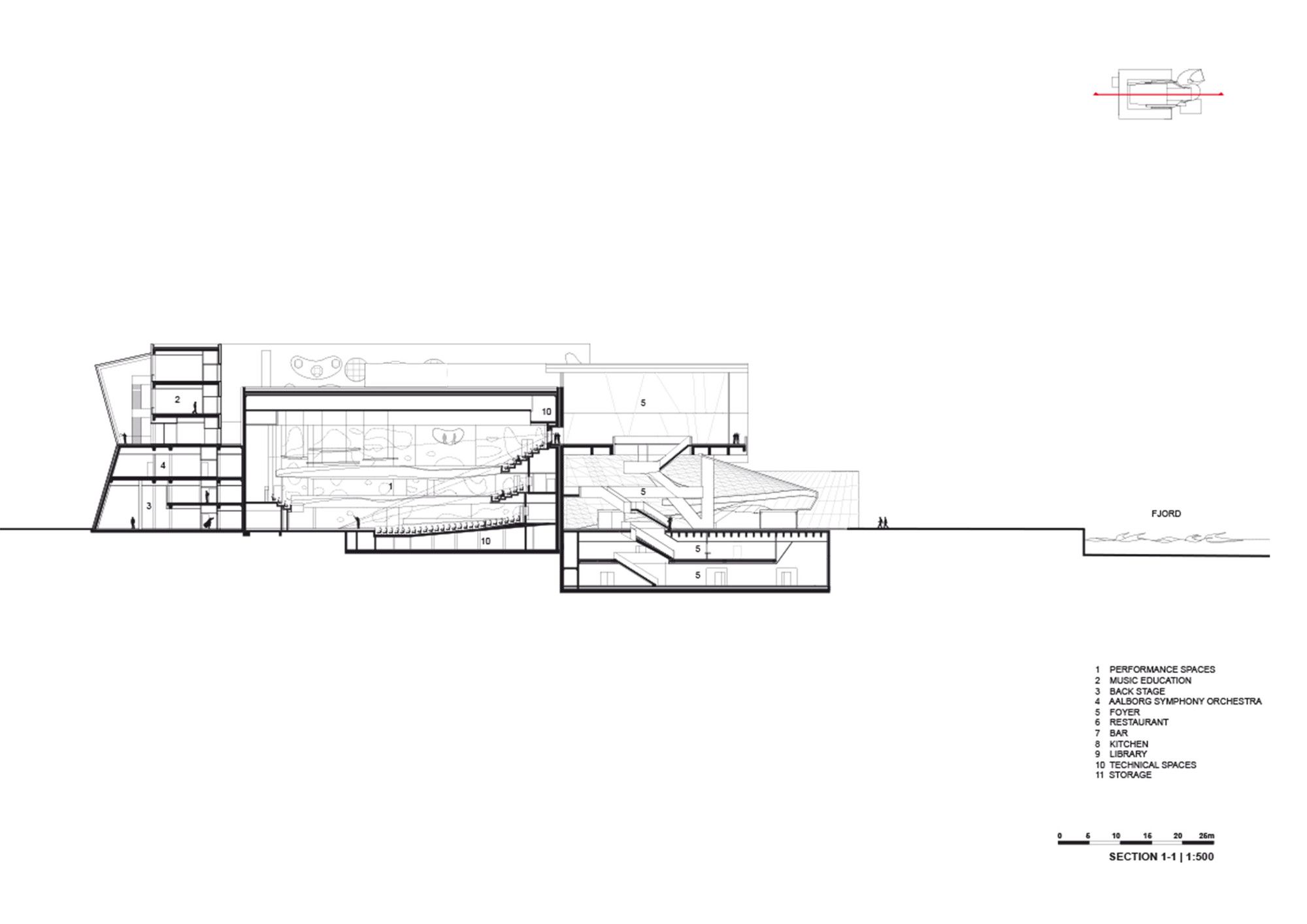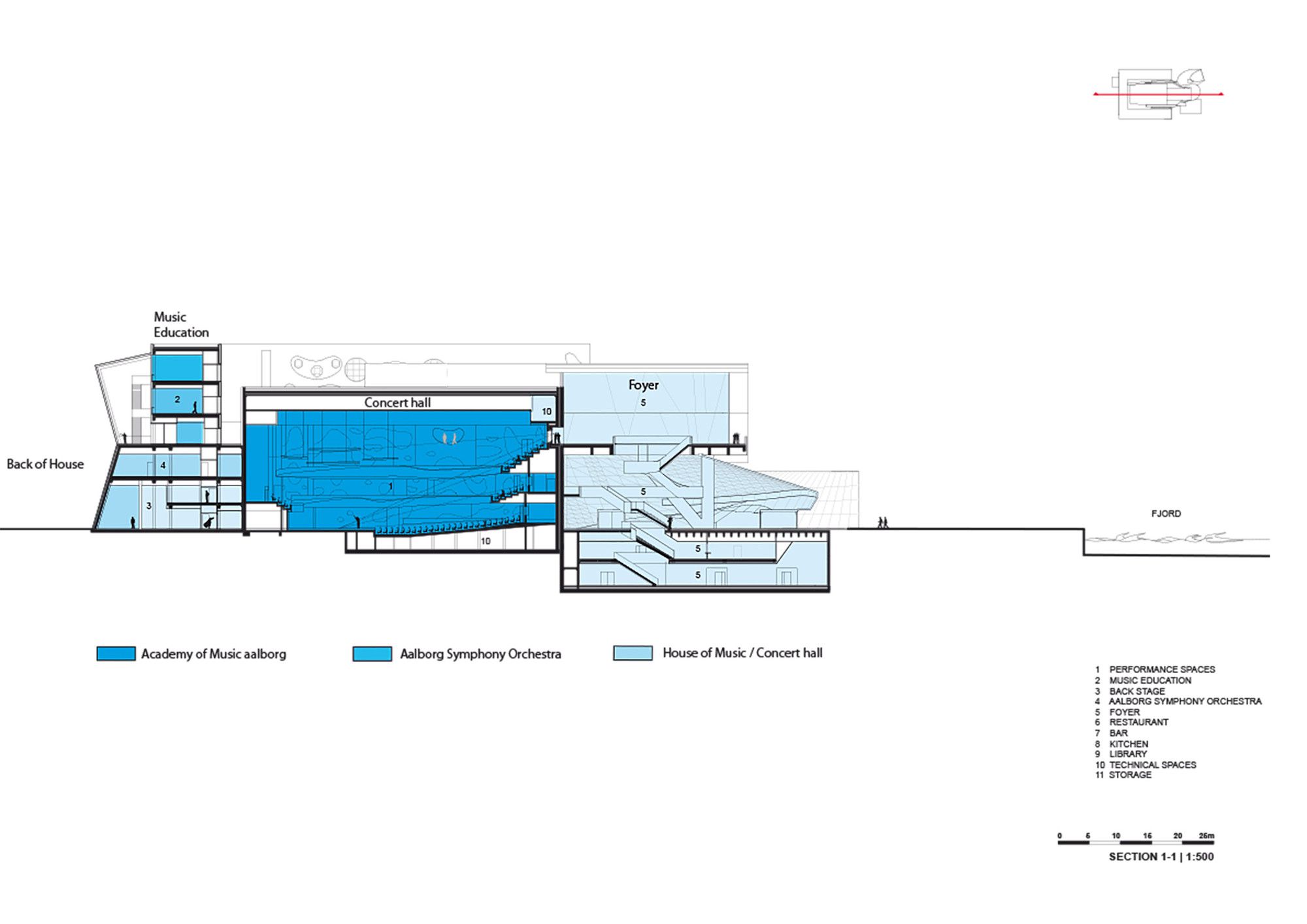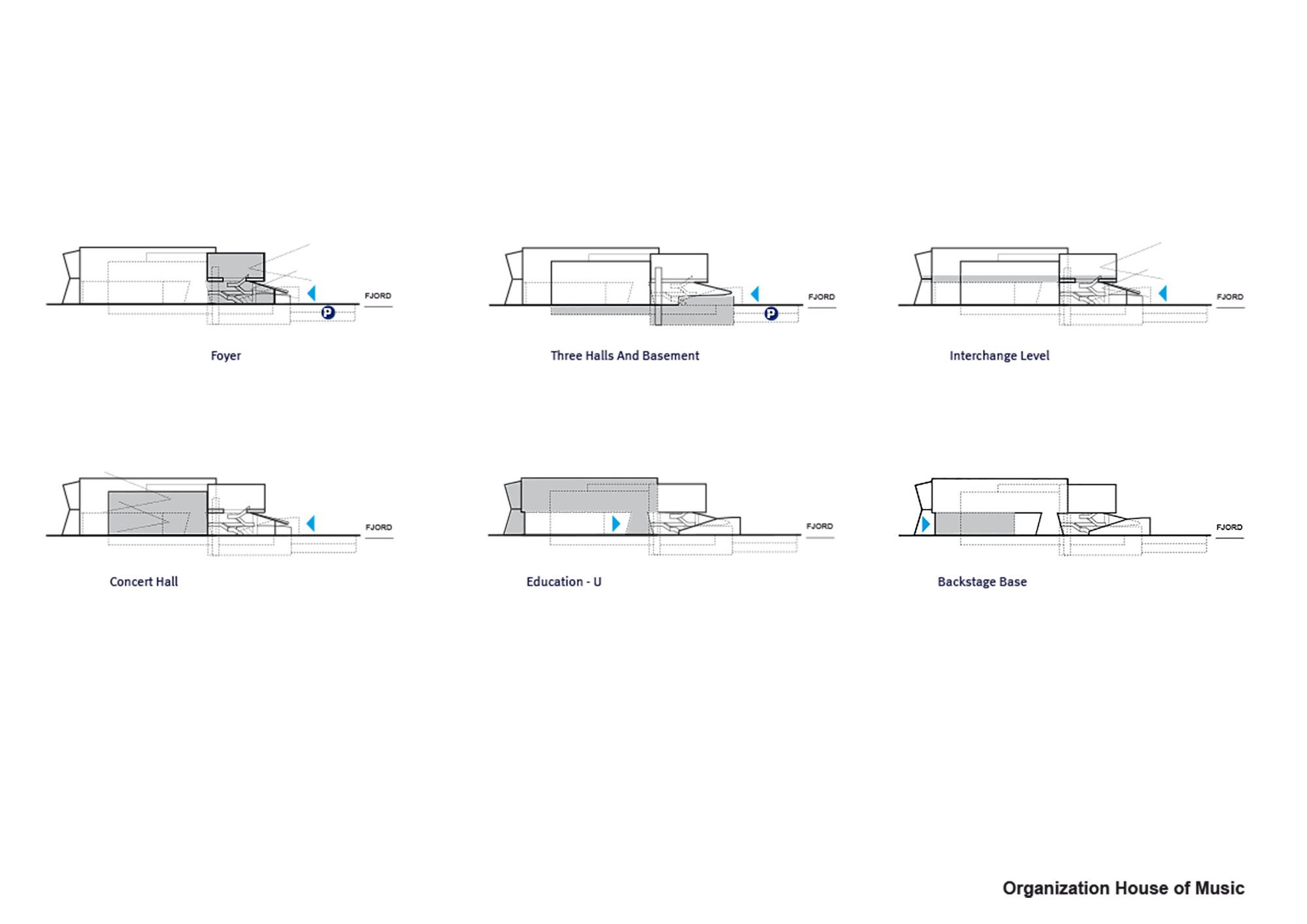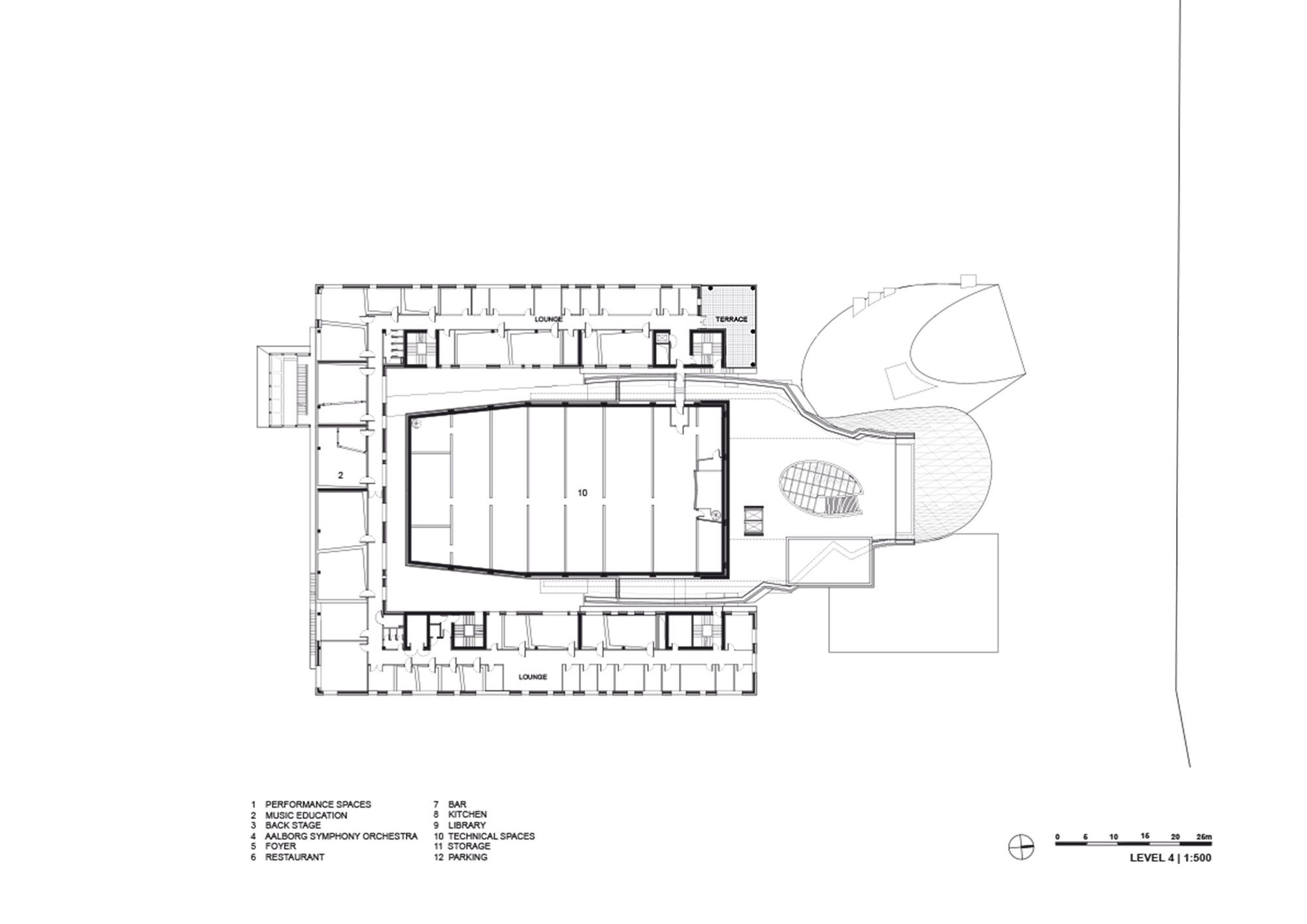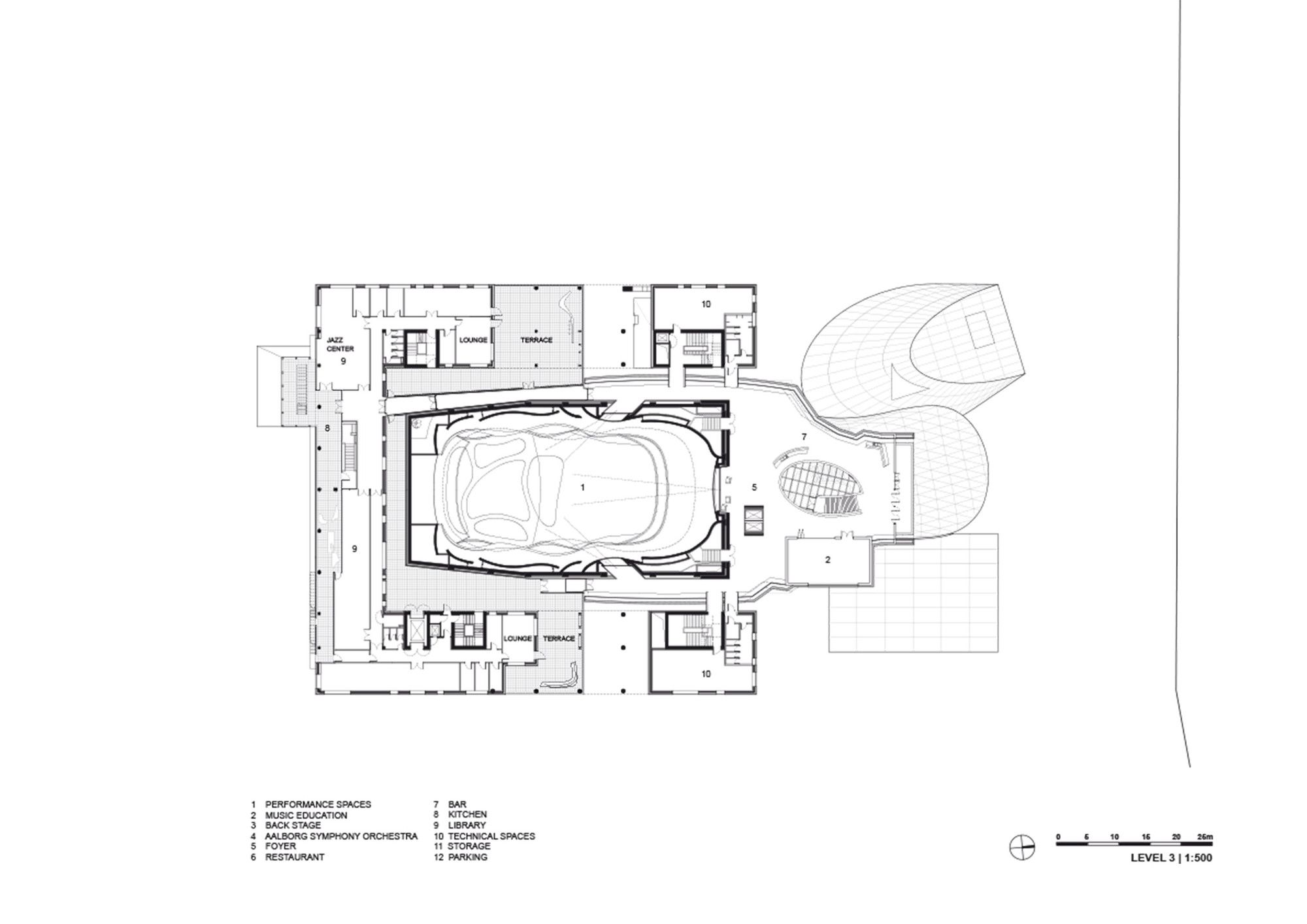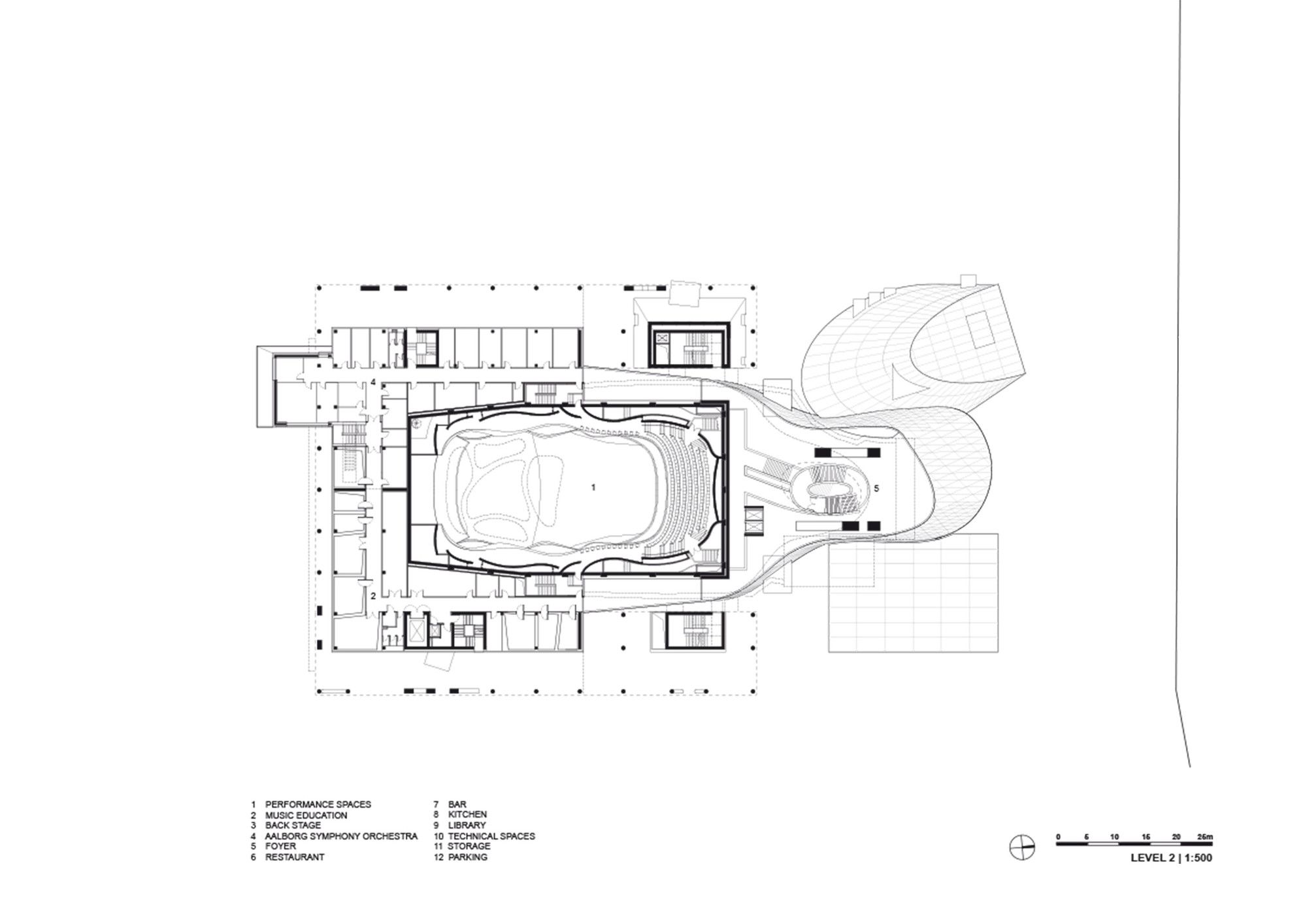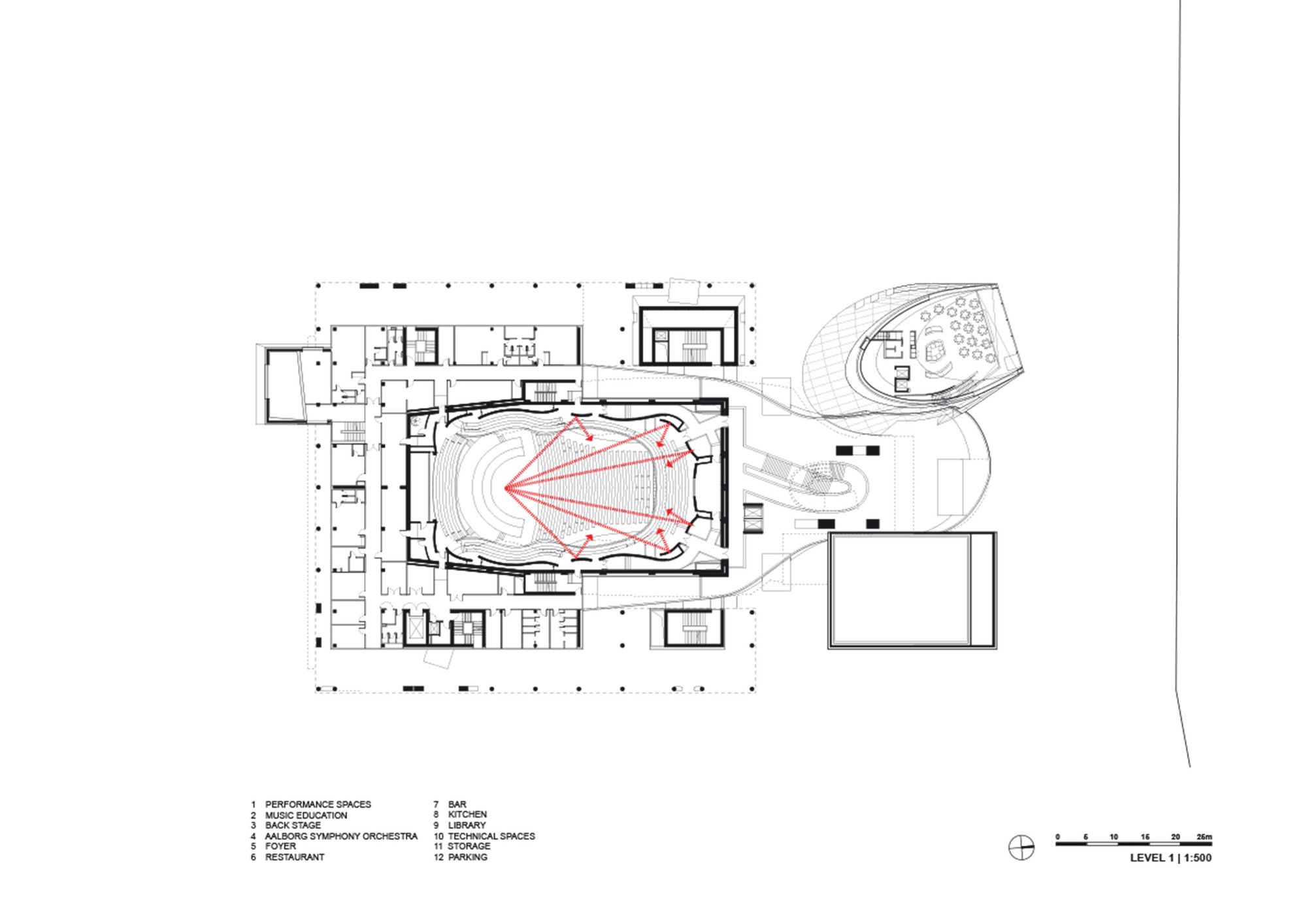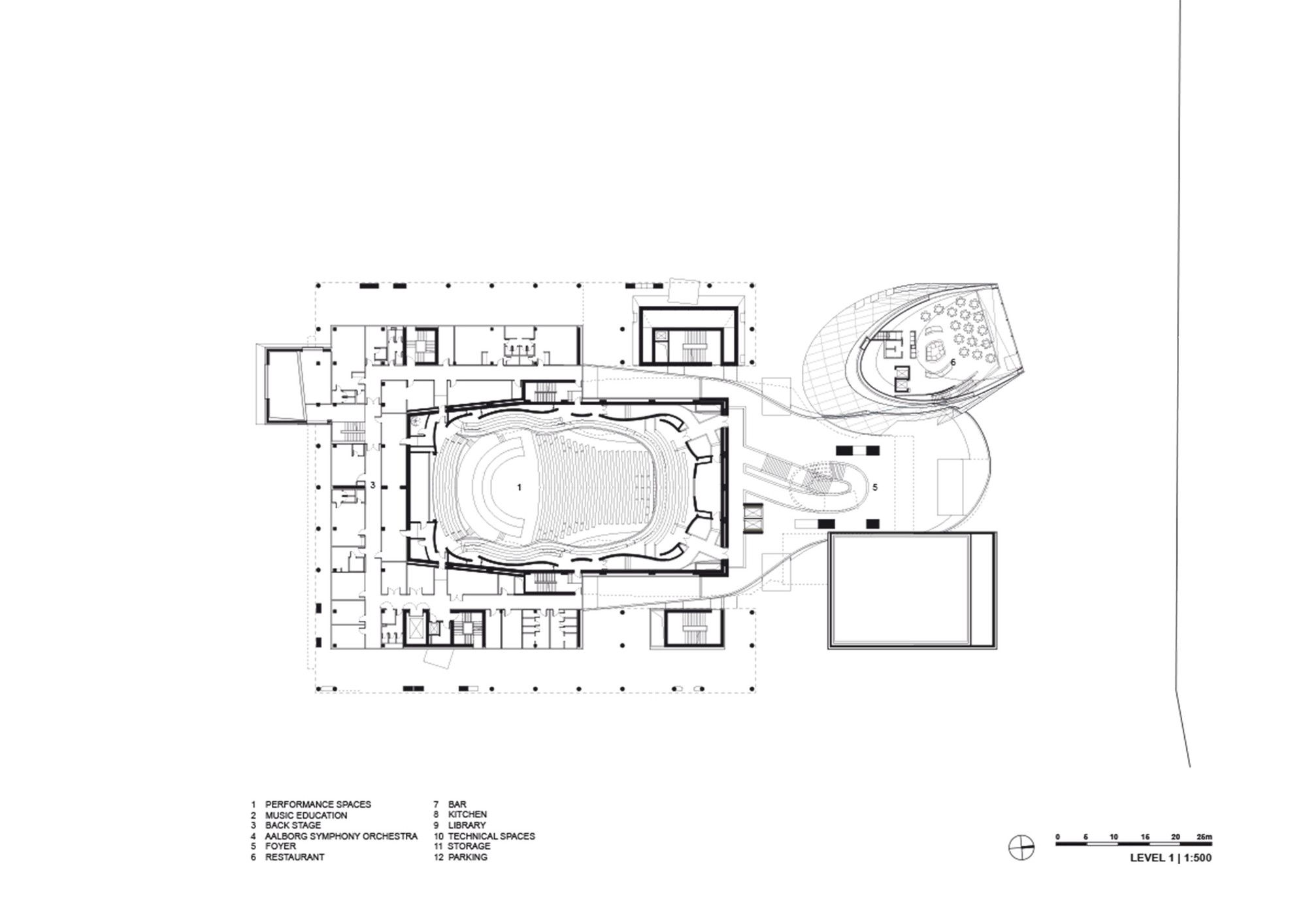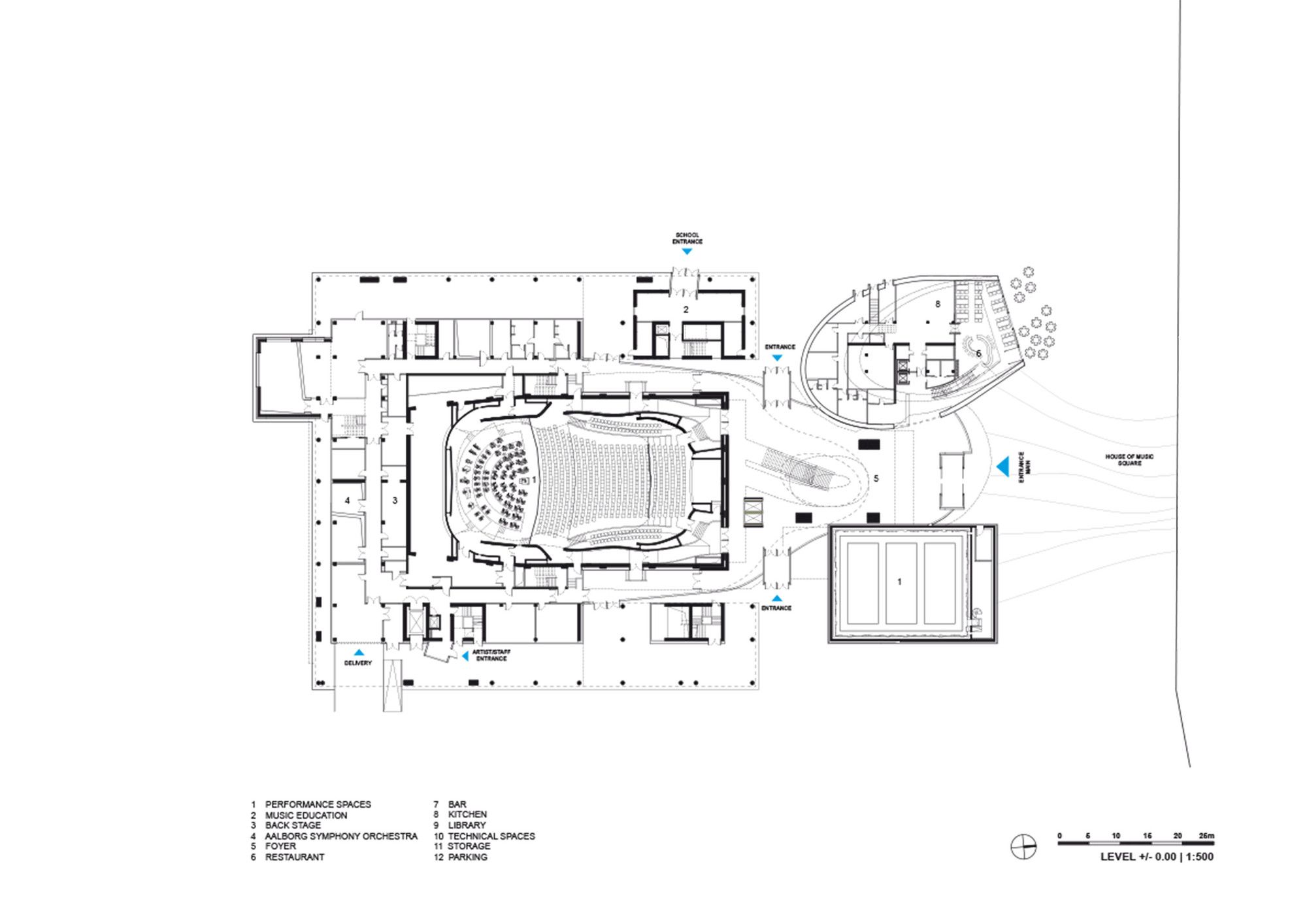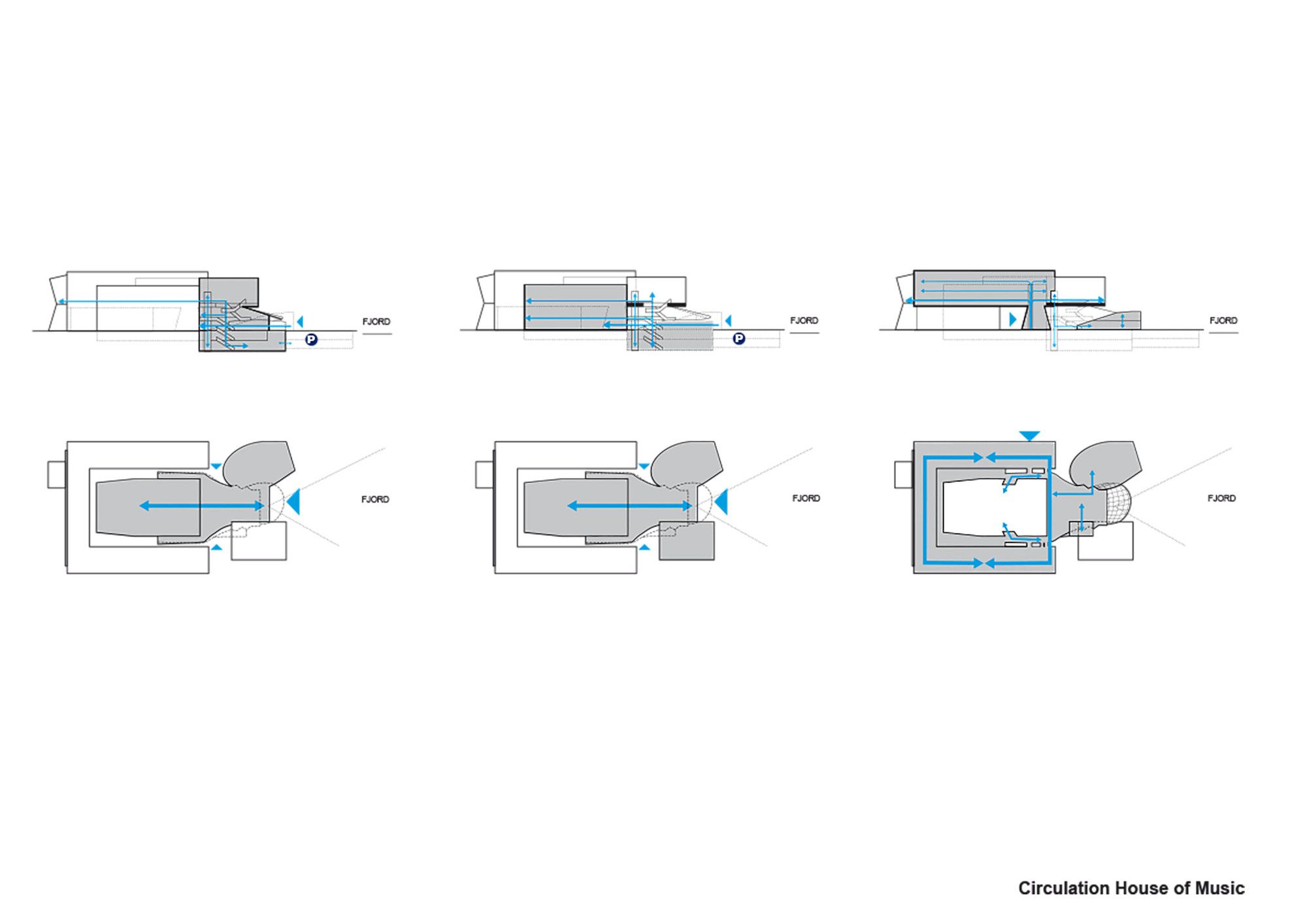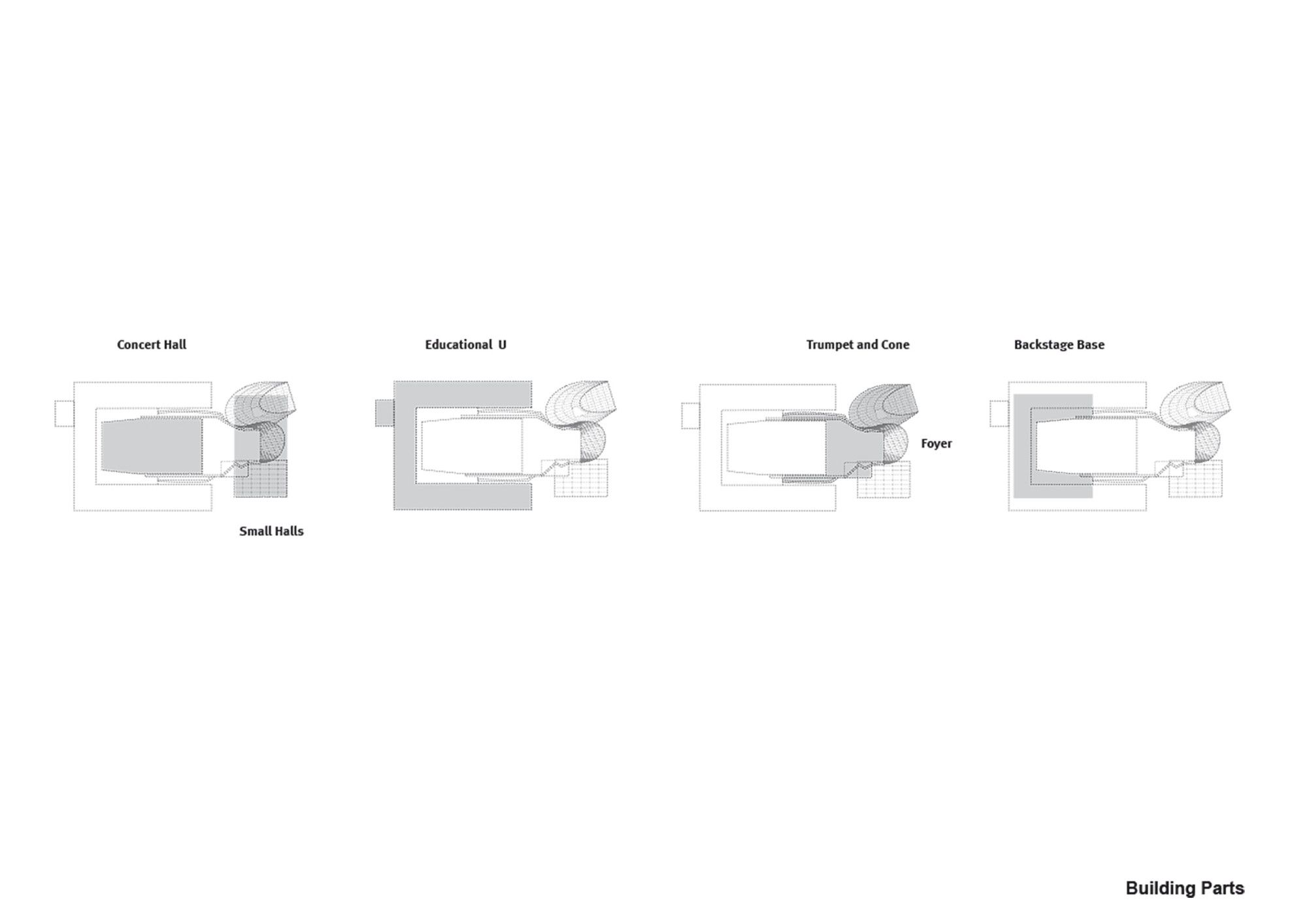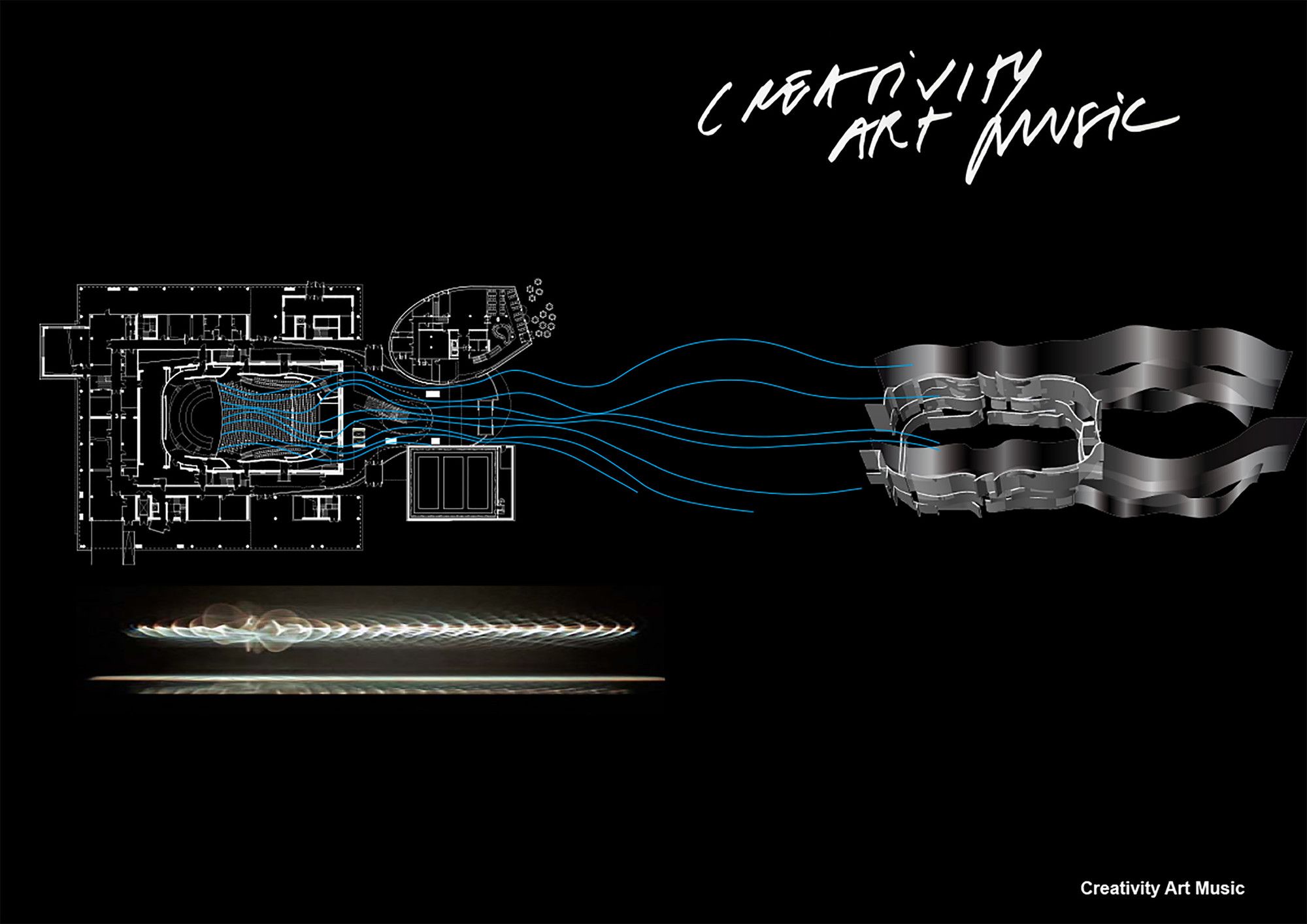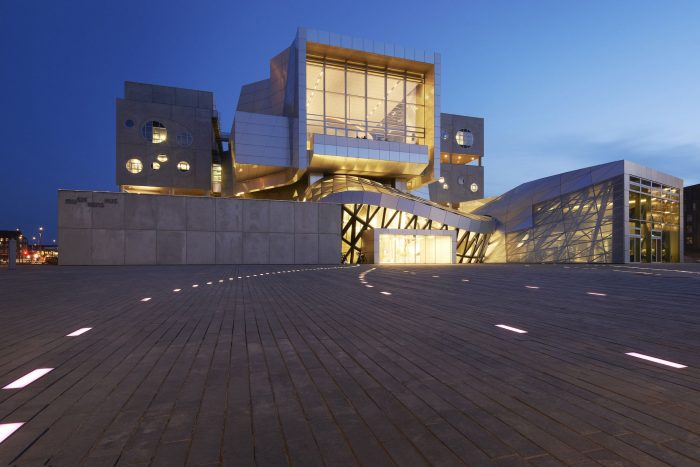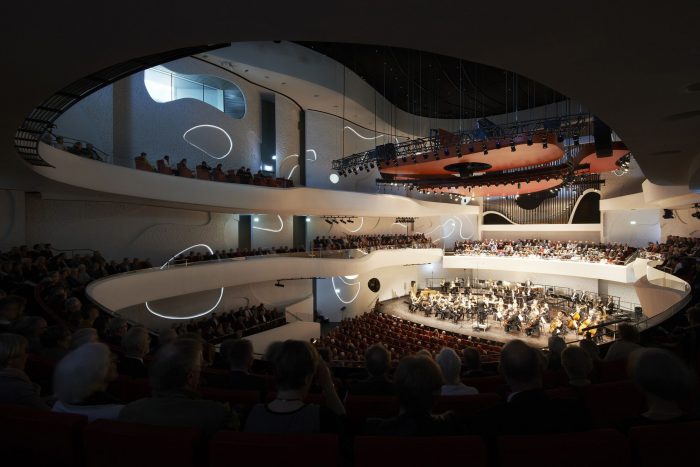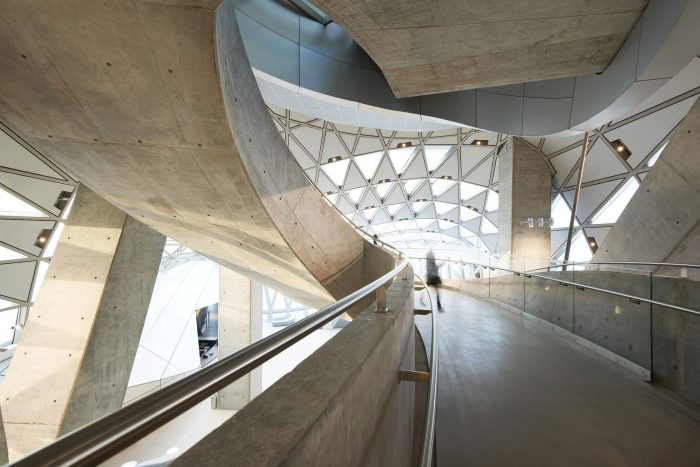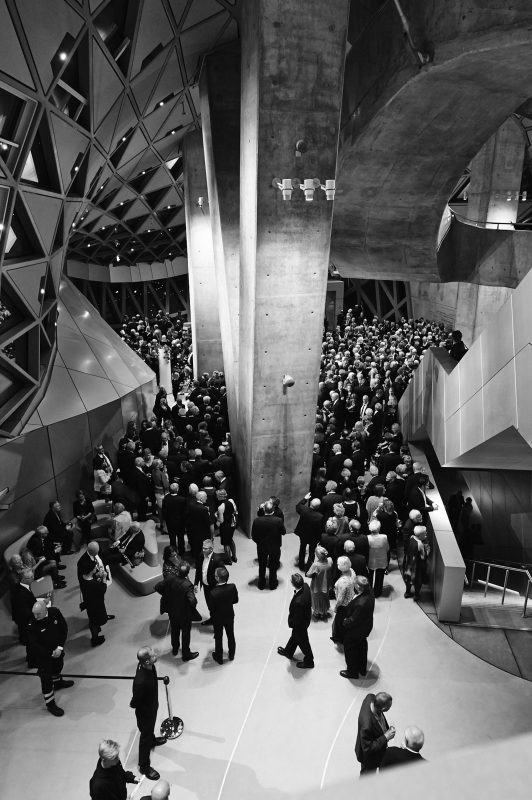The House of Music or Musikkens Hus (Danish) in Aalborg, Denmark is not just another concert hall or an auditorium. It is a place where education and performance are fused within a unique urban typology that exposes the city and its people to new opportunities. It has been designed by the Vienna-based architecture firm Coop Himmelbl(l)au, an office co-founded by the renowned Wolf D. Prix. After four years of construction, the cultural centre was opened ceremoniously to the public in March 2014 by the Danish Queen Margrethe II.
The House of Music has been designed to bring together artists, students, teachers and the audience and promotes communication and inspiration within them. “The idea behind the building can already be read from the outer shape. The school embraces the concert hall,” Wolf D. Prix described. The music college is distributed along the U-shaped external volume that embraces the concert hall within. This volume contains the classrooms and rehearsal areas of the music school. As viewed externally, the building’s facades are made out fluid roof canopies and sharp volumetric shapes that are comprised by circular windows and curtain walls.
Wolf D. Prix states that the building acts as a symbol for the union of music and architecture. It is also a highly efficient relationship between music and technology which results in one of the quietest and sustainable spaces for symphonic music in Europe. The striking and highly complex required efficient collaboration between Coop Himmelb(l)au and audio engineer, Tateo Nakajima, of Arup. The seats of the orchestra are arranged in a calculated curved way in order to offer the best views and acoustics possible. The venue features advanced cooling and heating technology through a system of water-filled pipes placed in the concrete floor slabs that regulate interior temperature both in winter and summer. Further ventilation systems with low velocities are placed under the 1,300 seats in the concert hall.
The venue is located on the edge of the river that runs through the city of Aalborg and this environment is reflected on the interior of the concert hall. Accurately calculated fluid forms and curved volumes shape the visually attractive interior while providing the best possible acoustics. The curved windows that are placed on the three sides of the concert hall offer views from the school that surrounds it. This allows students to always be part of the events that are happening and get inspired by great musicians. These windows simply frame their future. The rehearsal rooms and classrooms are designed specifically to the function that takes place within each one of them. The amount of light and openness depends on the instrument and the number of people that occupy the spaces. The windows are designed to be circular and in this way they represent musical notes in an abstracted way.
Moreover, adjacent to the concert hall there is a five-storey-high foyer that serves as a meeting place for students, teachers, artists and the public audience and visitors. It is comprised with sets of stairs, observation balconies and large windows that frame majestic views over the river and the built landscape beyond. It is a dynamic yet flexible space that is able to adapt to different activities and functions required or planned.
The House of Music is a greatly complex edifice that it is able to capture emotion and thrill while stimulating the senses. It is maybe too complex though, as it creates a sort of confusion as someone tries to virtually map the spaces and forms. It acts as another reminder that music has to be seen as well. Listening is not enough. We need to see people performing and be aware of the process of creating a wonderful piece of music. Something that is getting lost every day through our young and digital musical industry. I believe that merging education with performance is something greatly innovative and this building should become an example for future concert halls and cultural centres to be designed.
Architects: Coop Himmelb(l)au
Location: Musikkens Plads, 9000 Aalborg, Denmark
Design Principal/ Ceo: Wolf D. Prix
Project Partner: Michael Volk
Design Architect: Luzie Giencke
Project Architect: Marcelo Bernardi, Pete Rose
Area: 20257.0 sqm
Project Year: 2014
Photographs: Martin Schubert, Courtesy of Coop Himmelb(l)au, Rene Jeppesen,Aleksandra Pawloff
By: Andreas Leonidou
